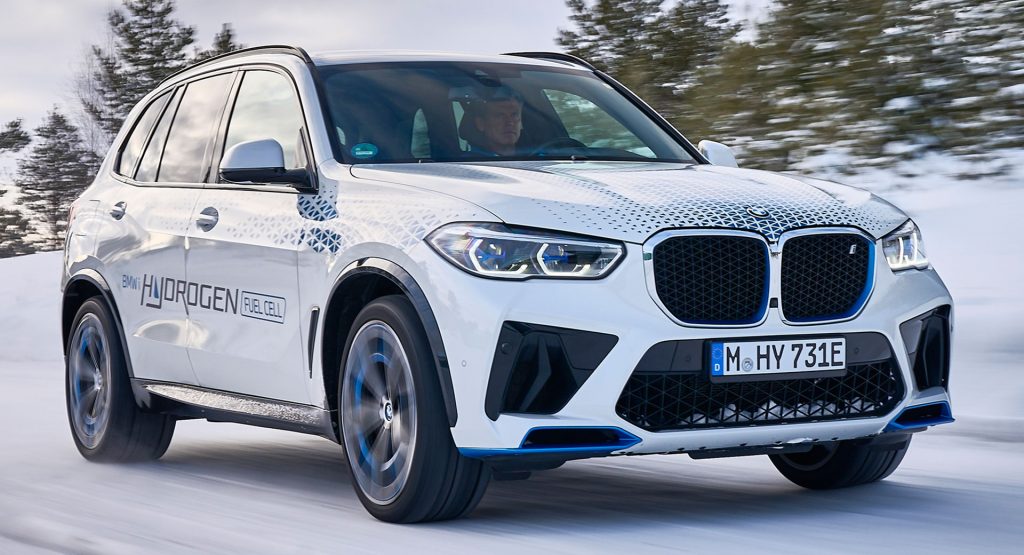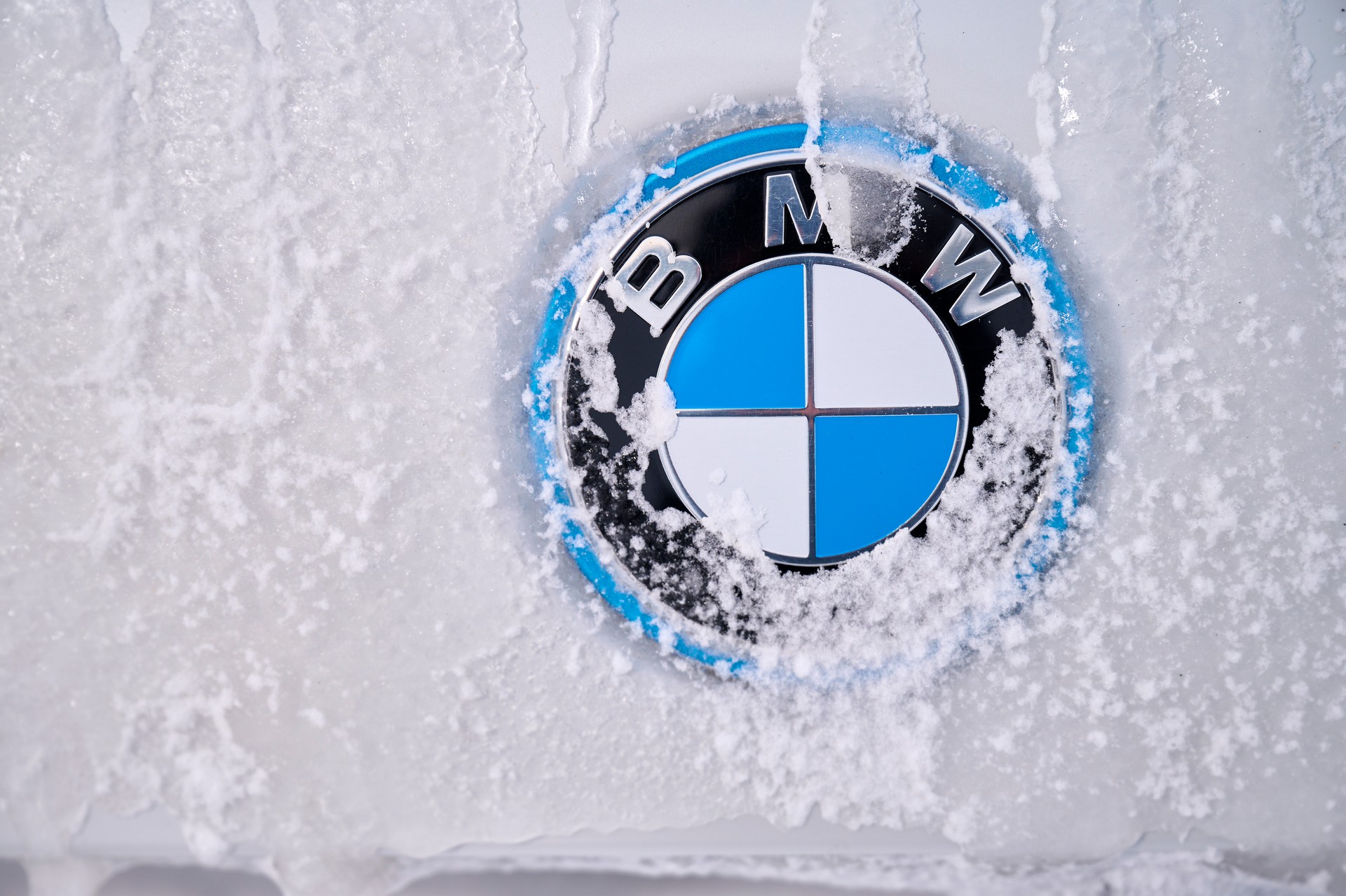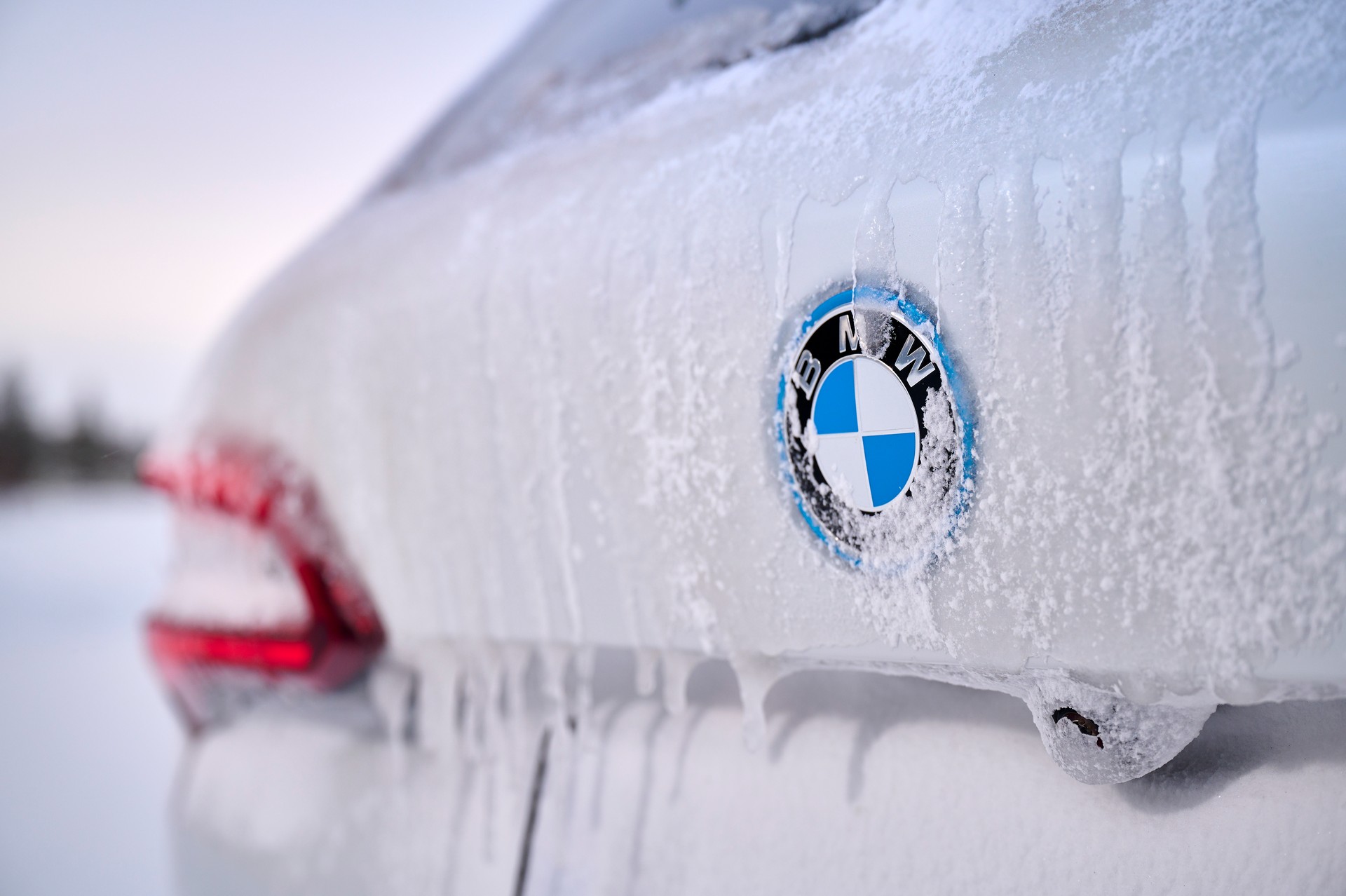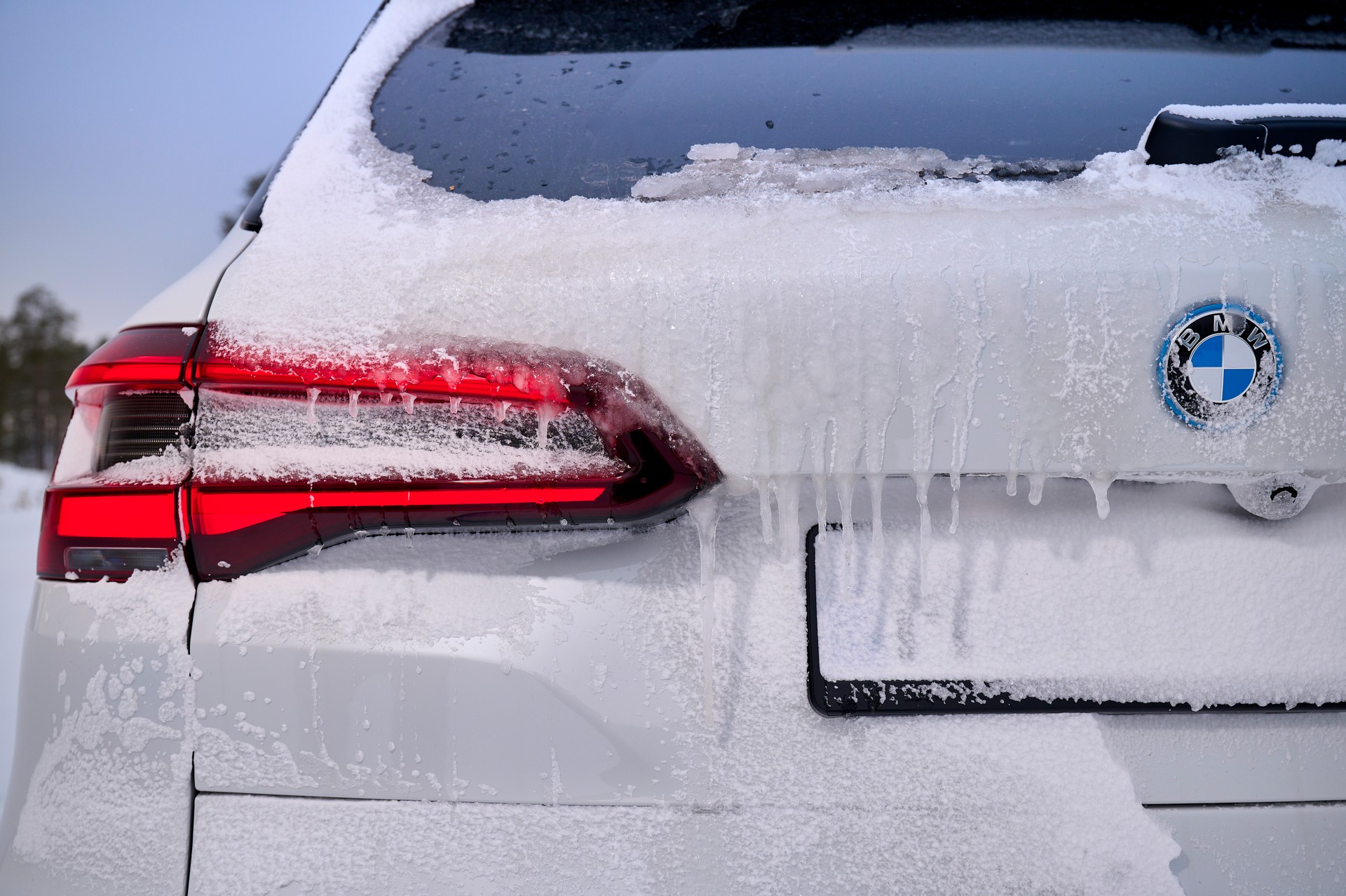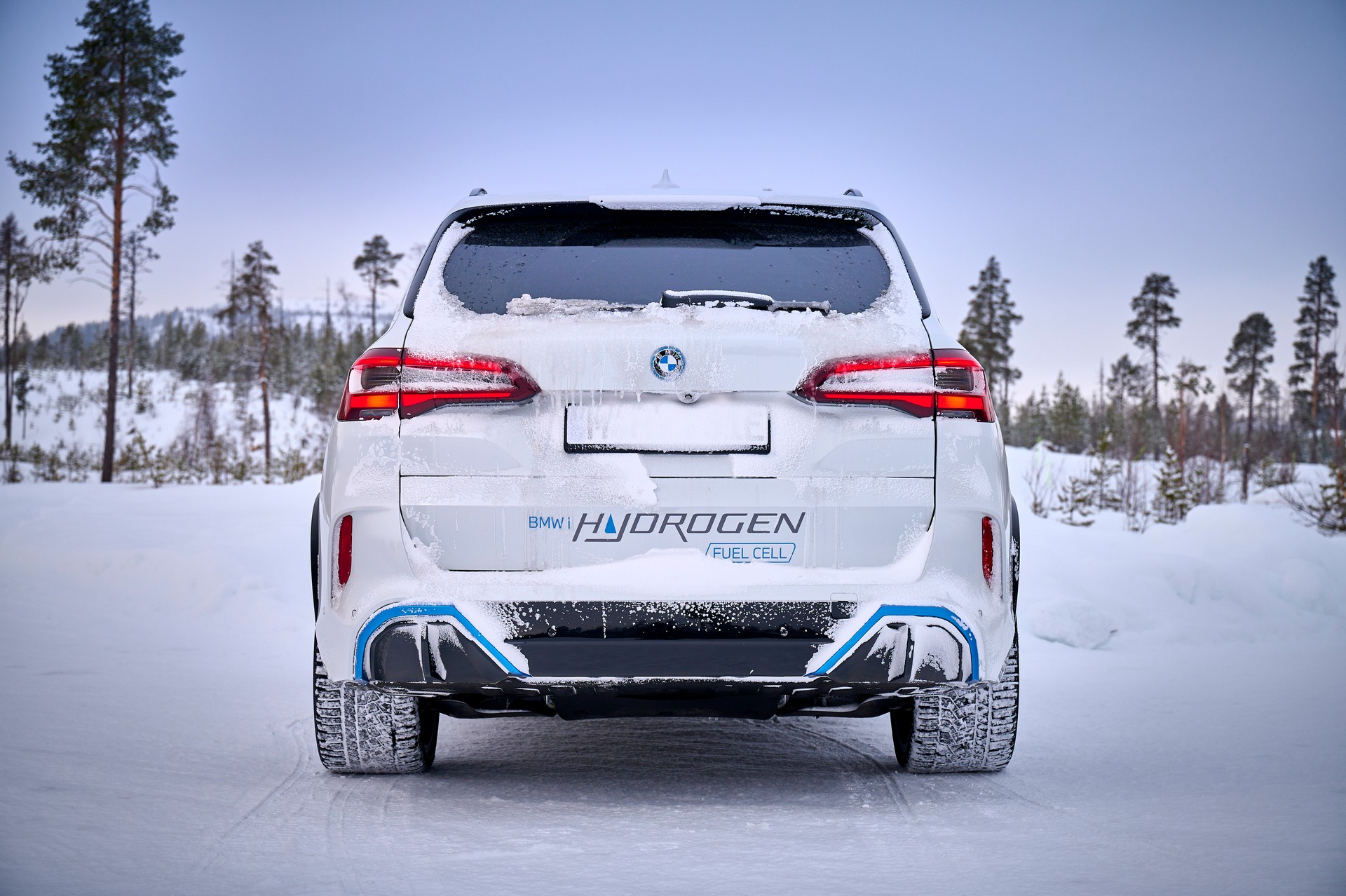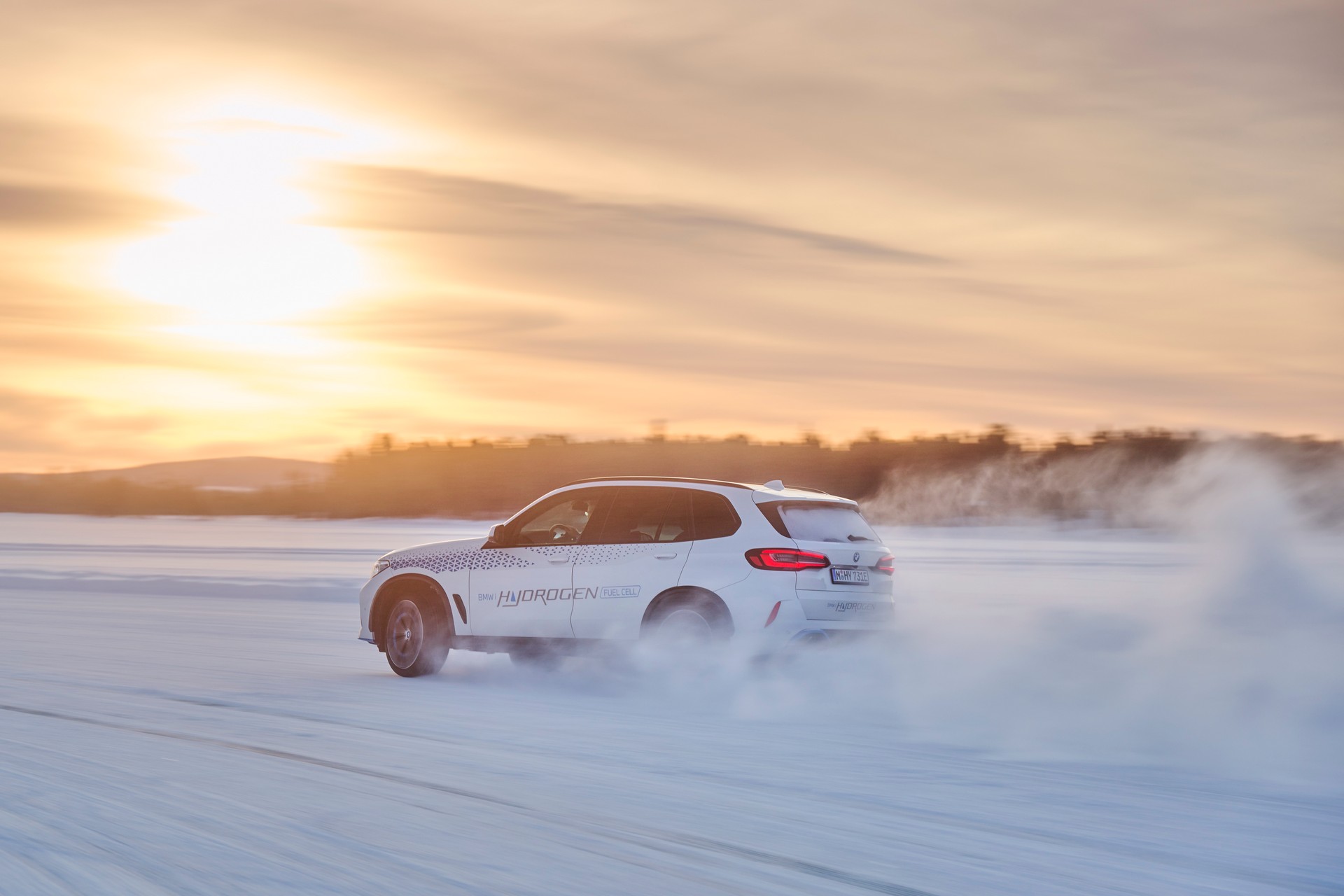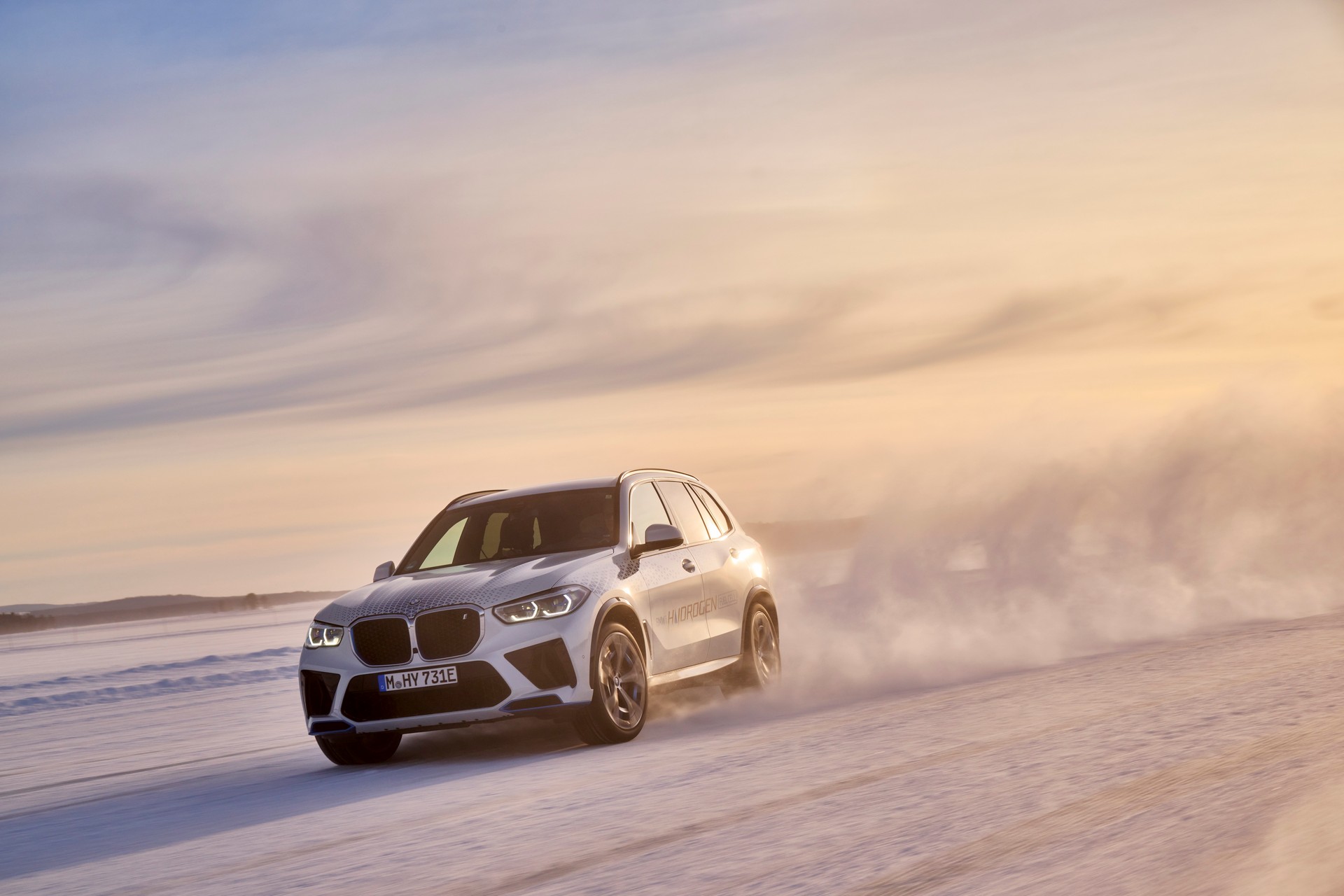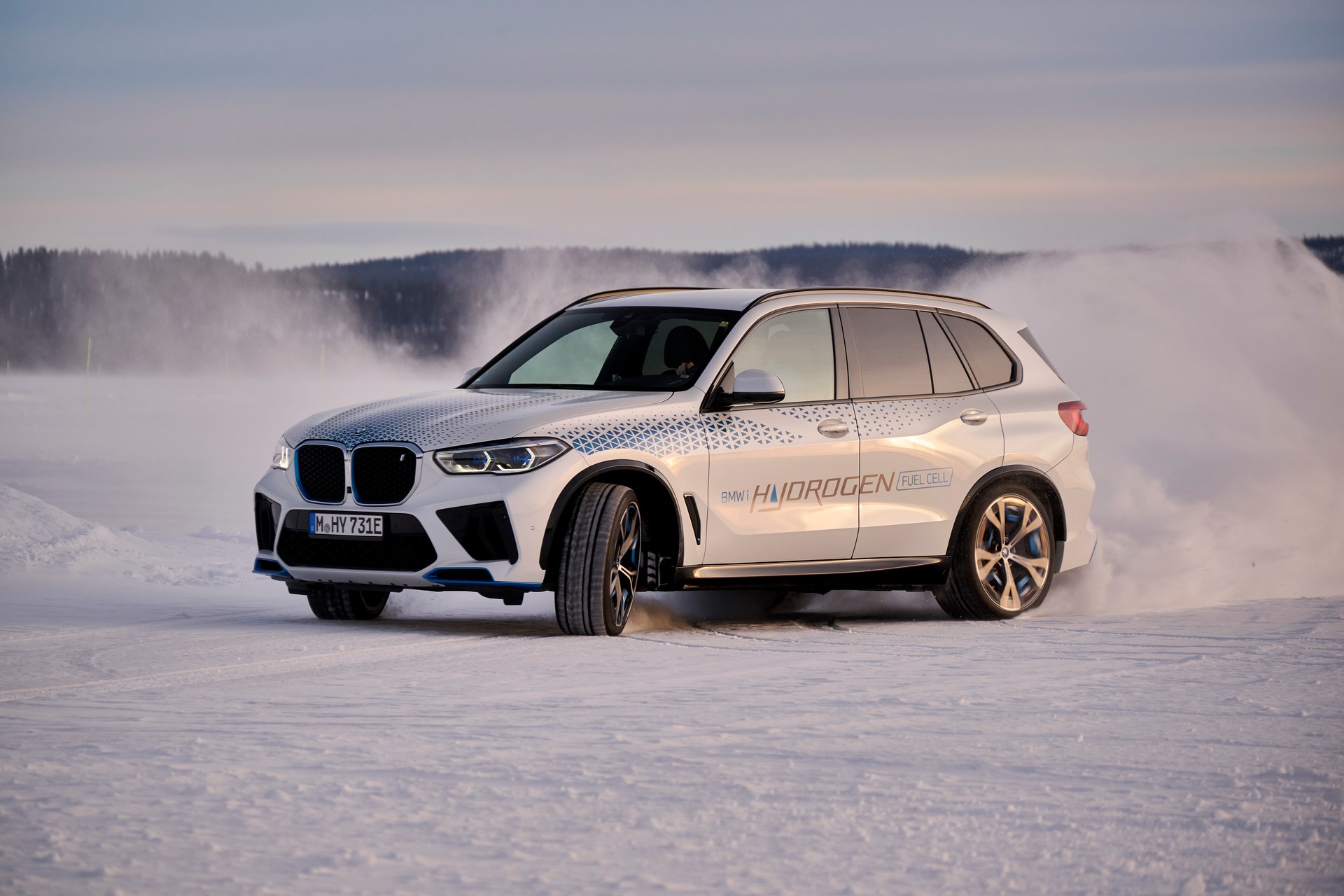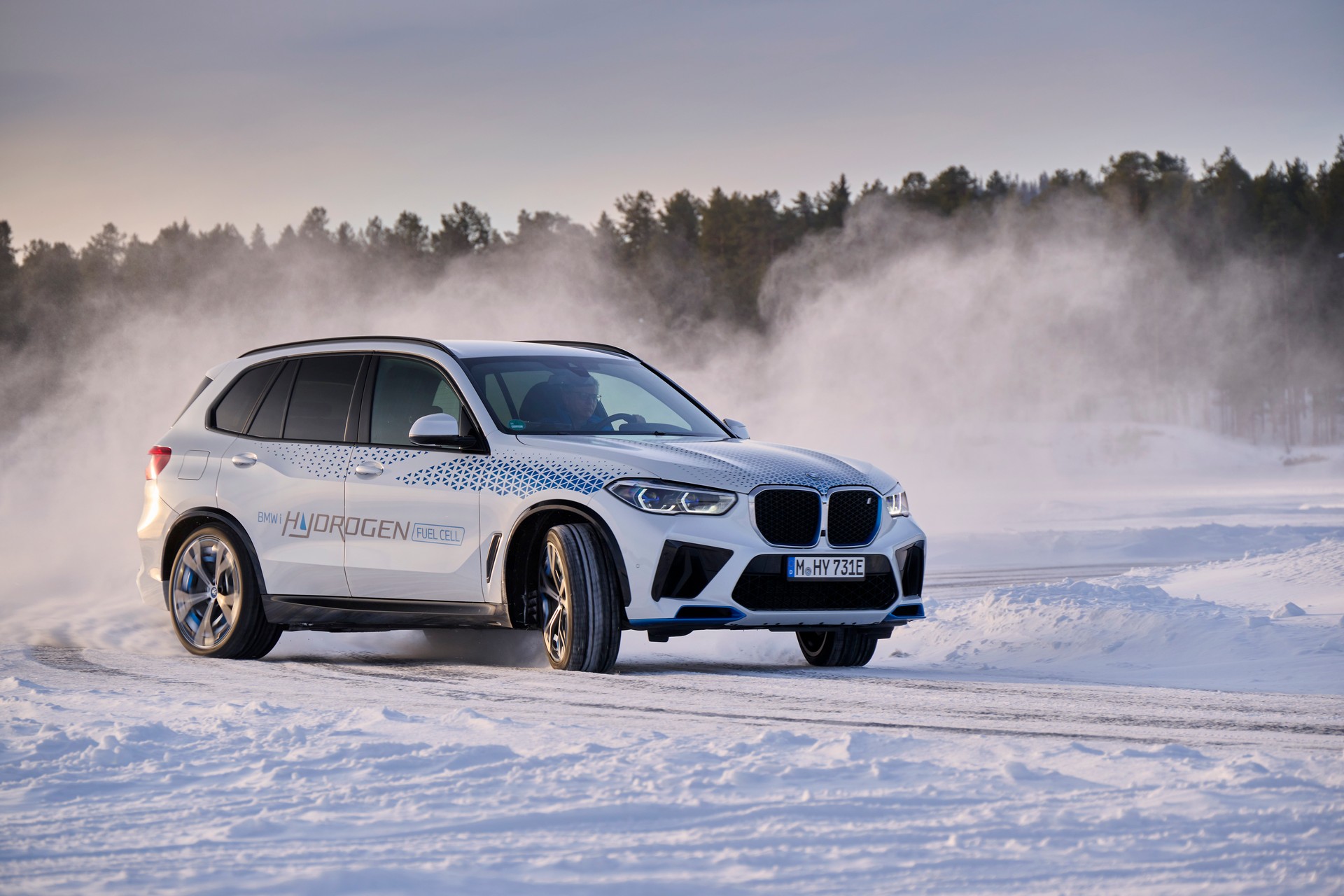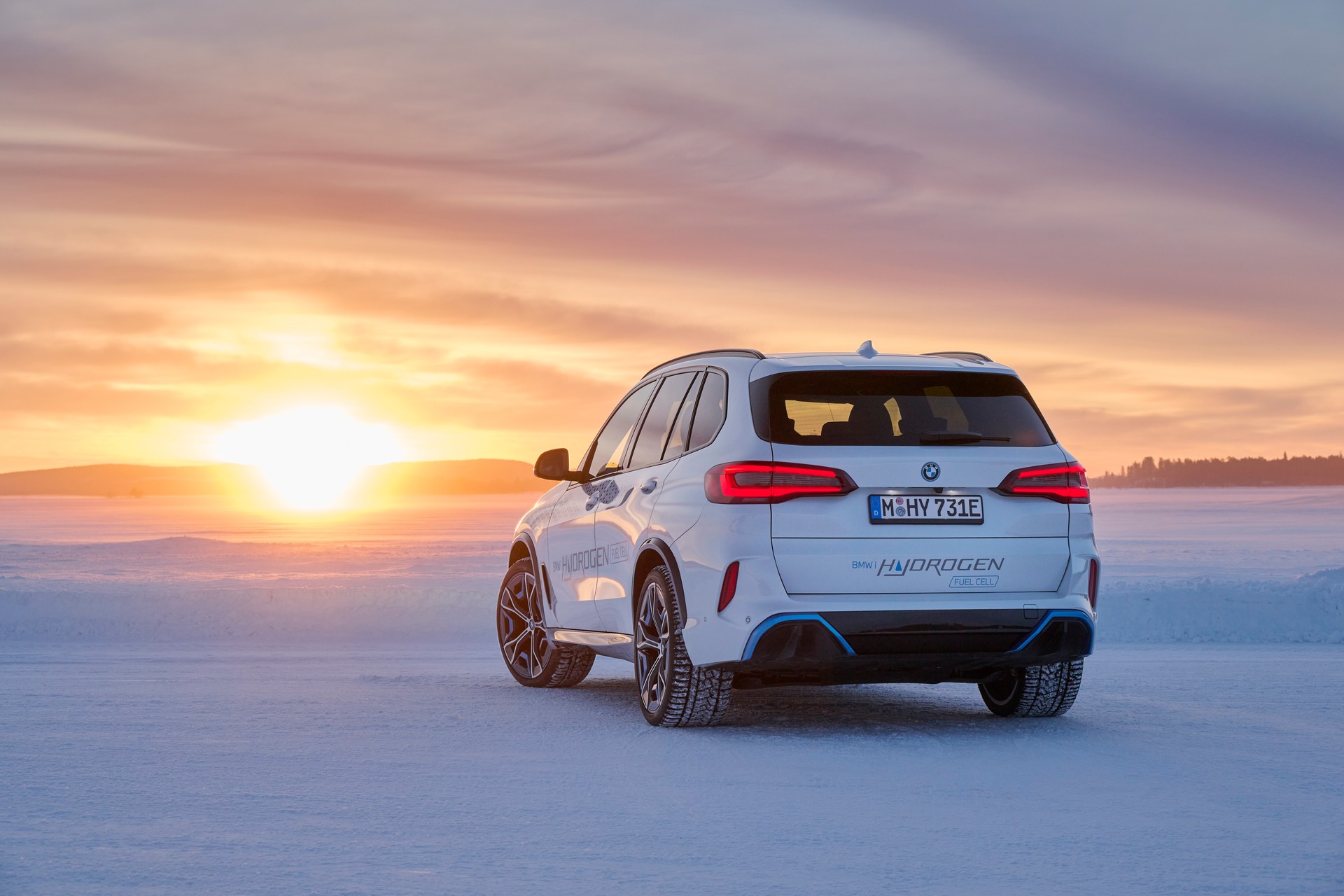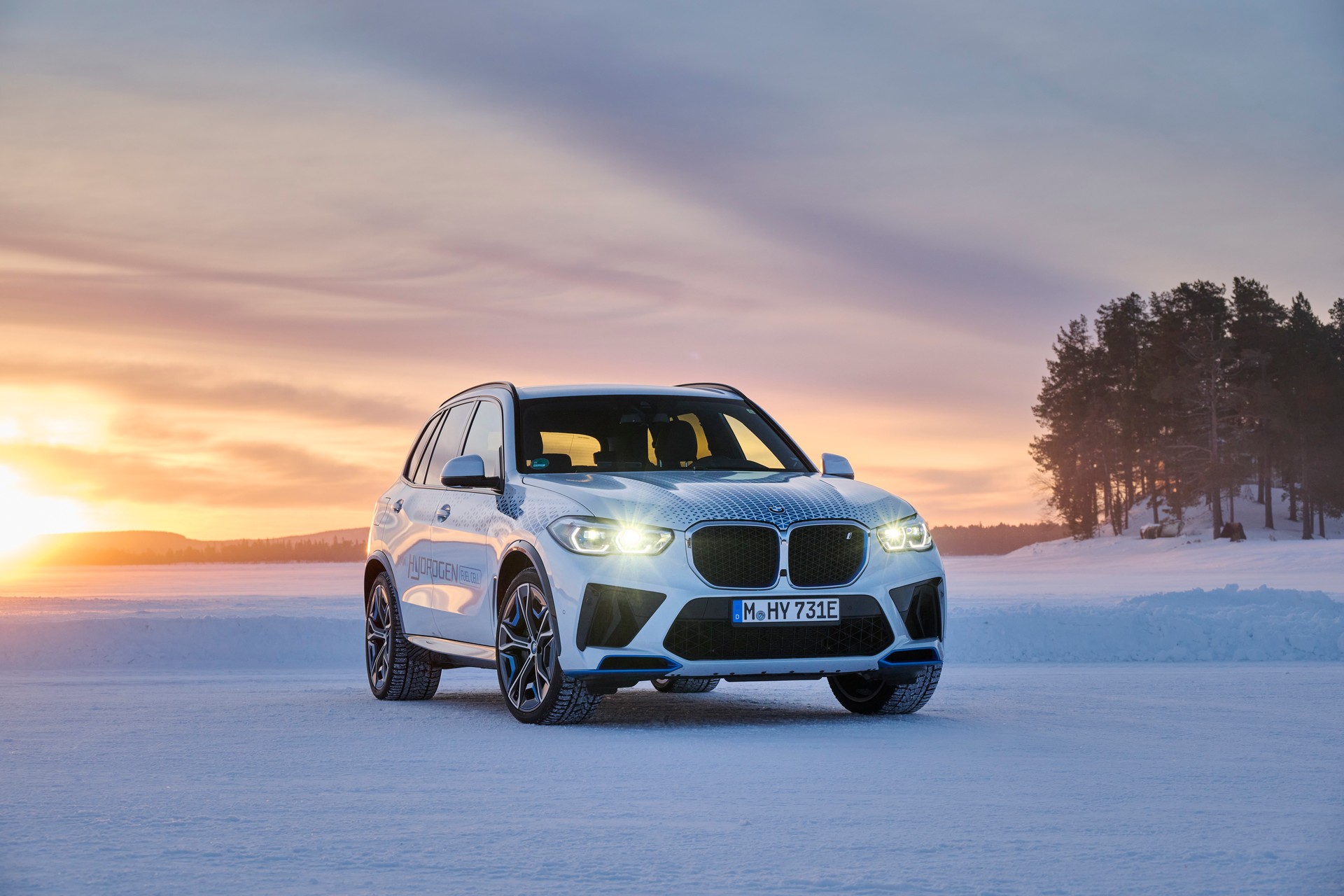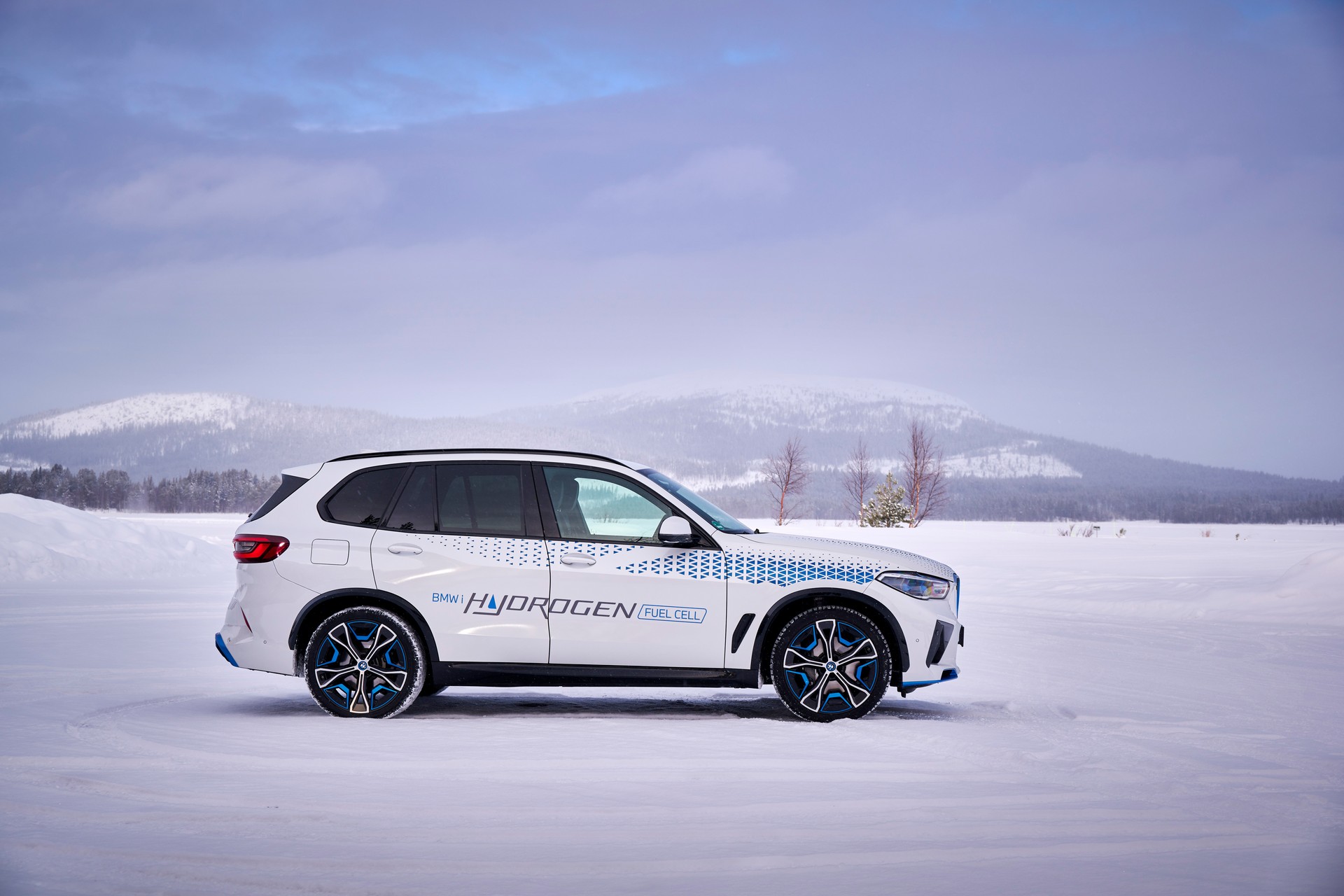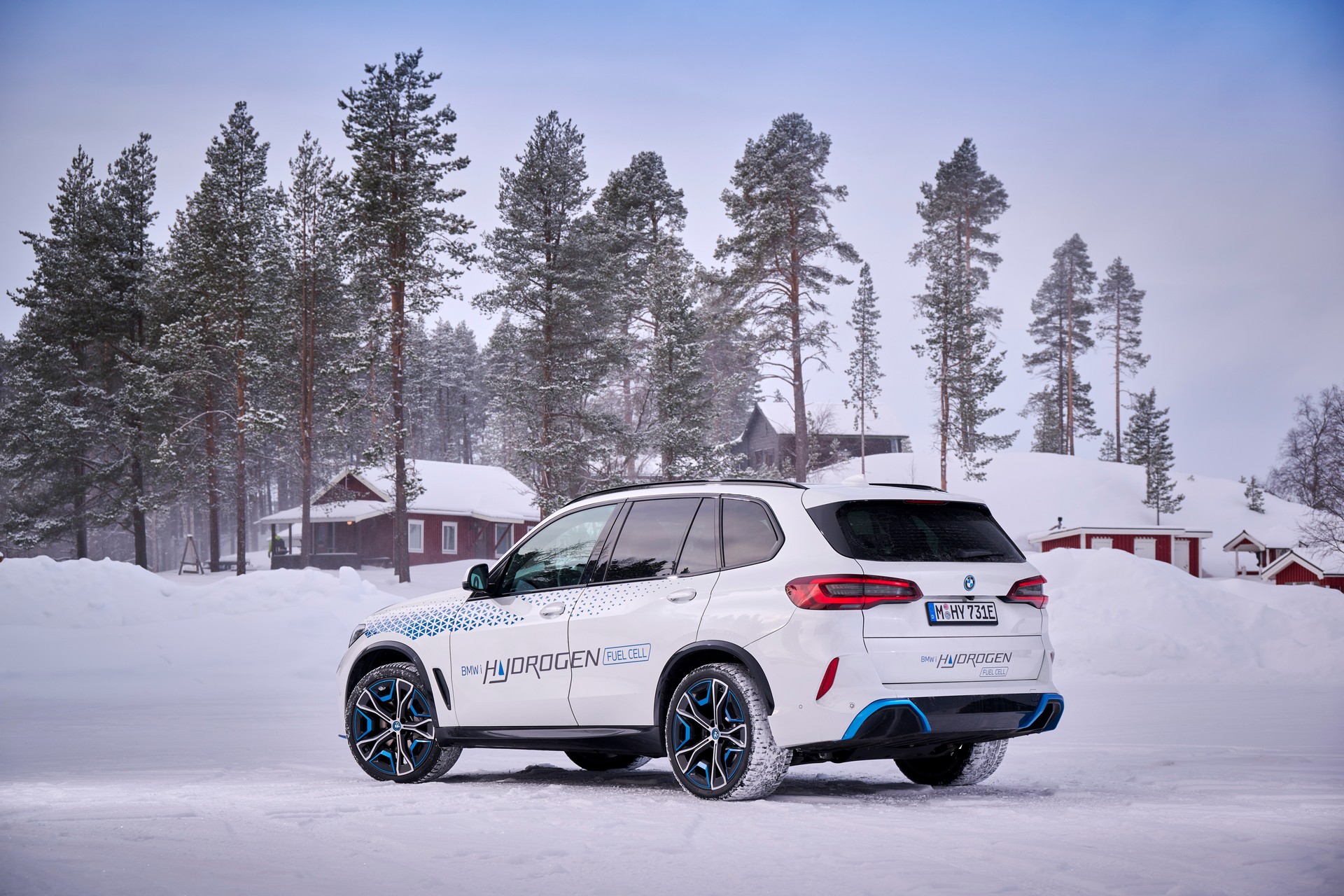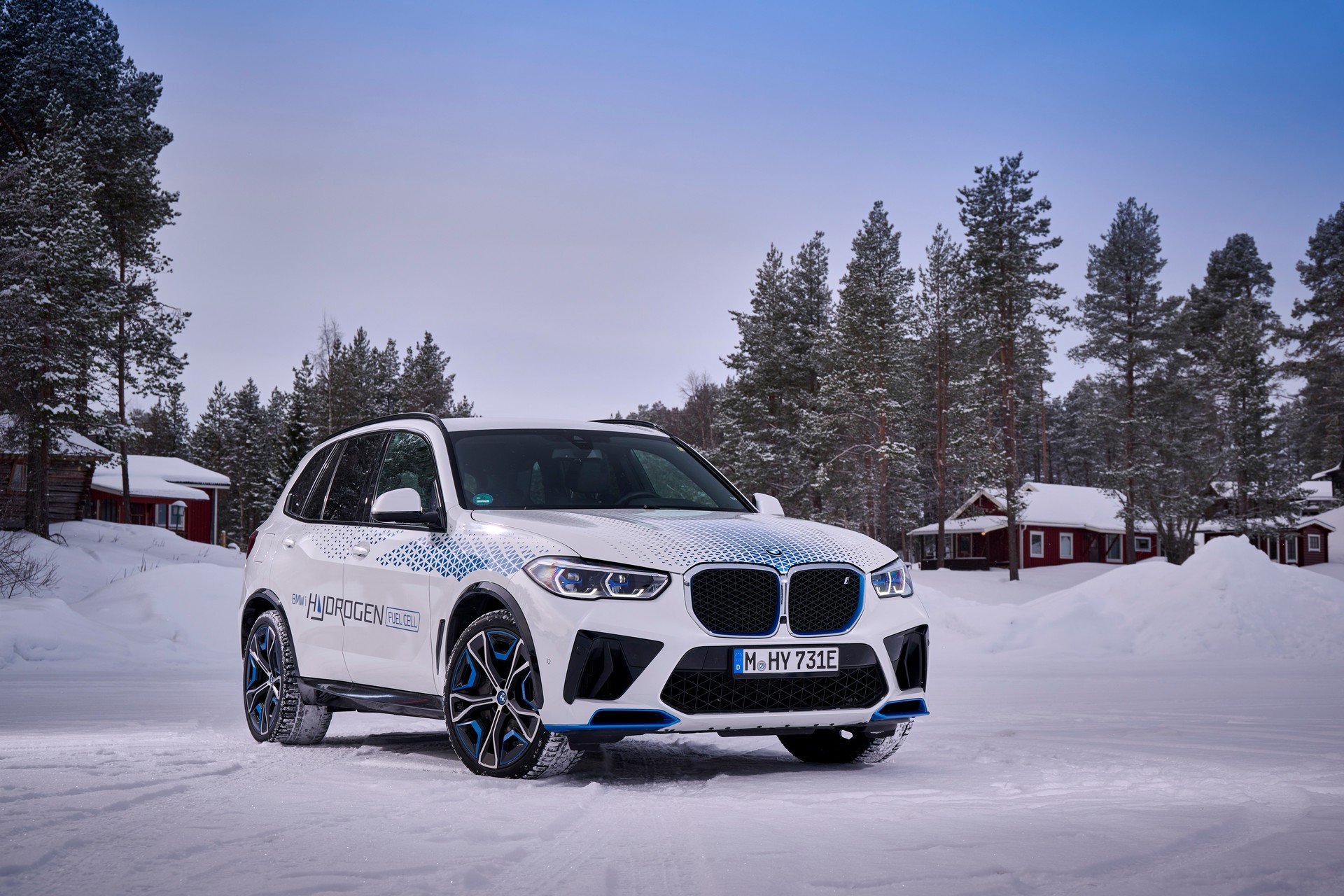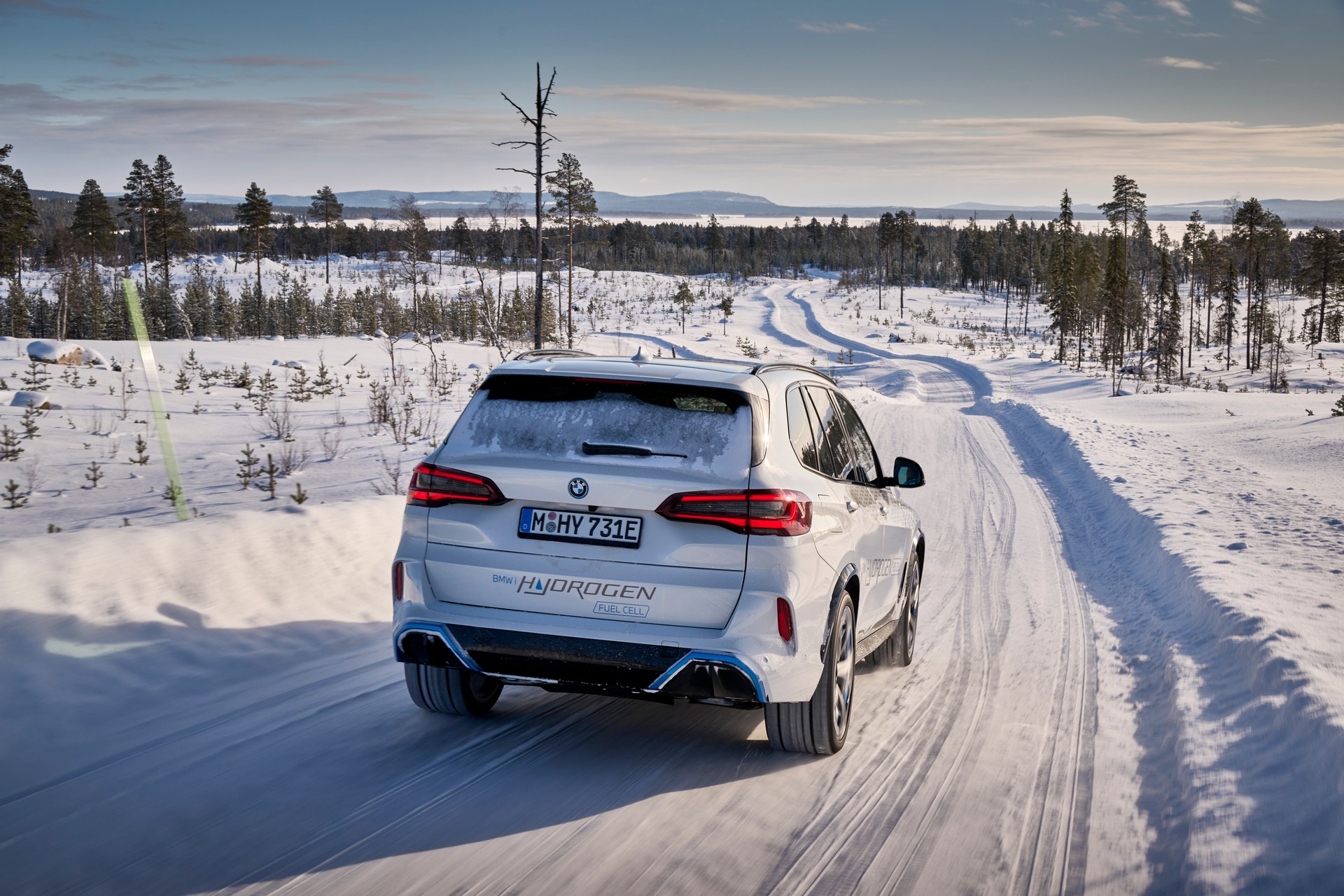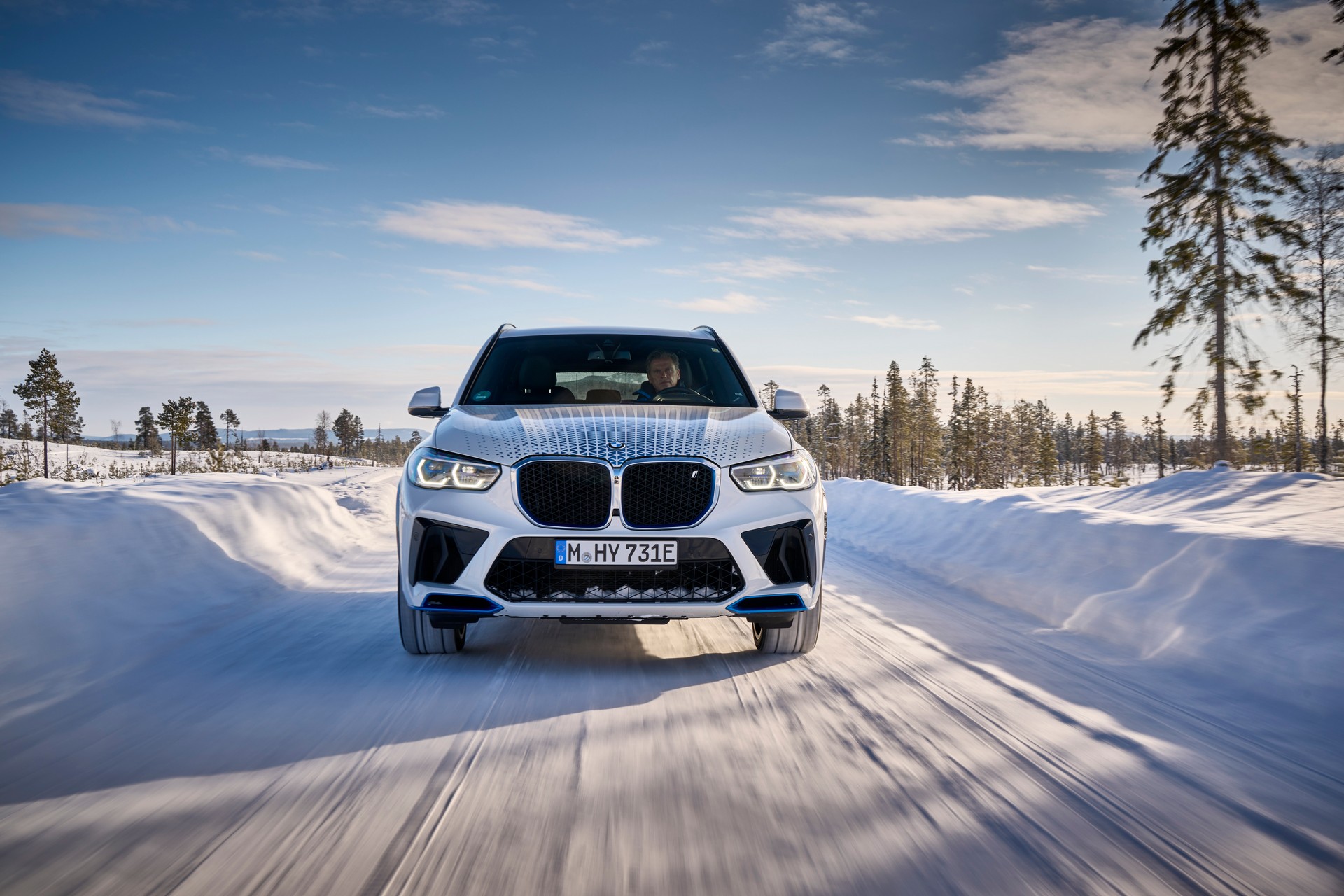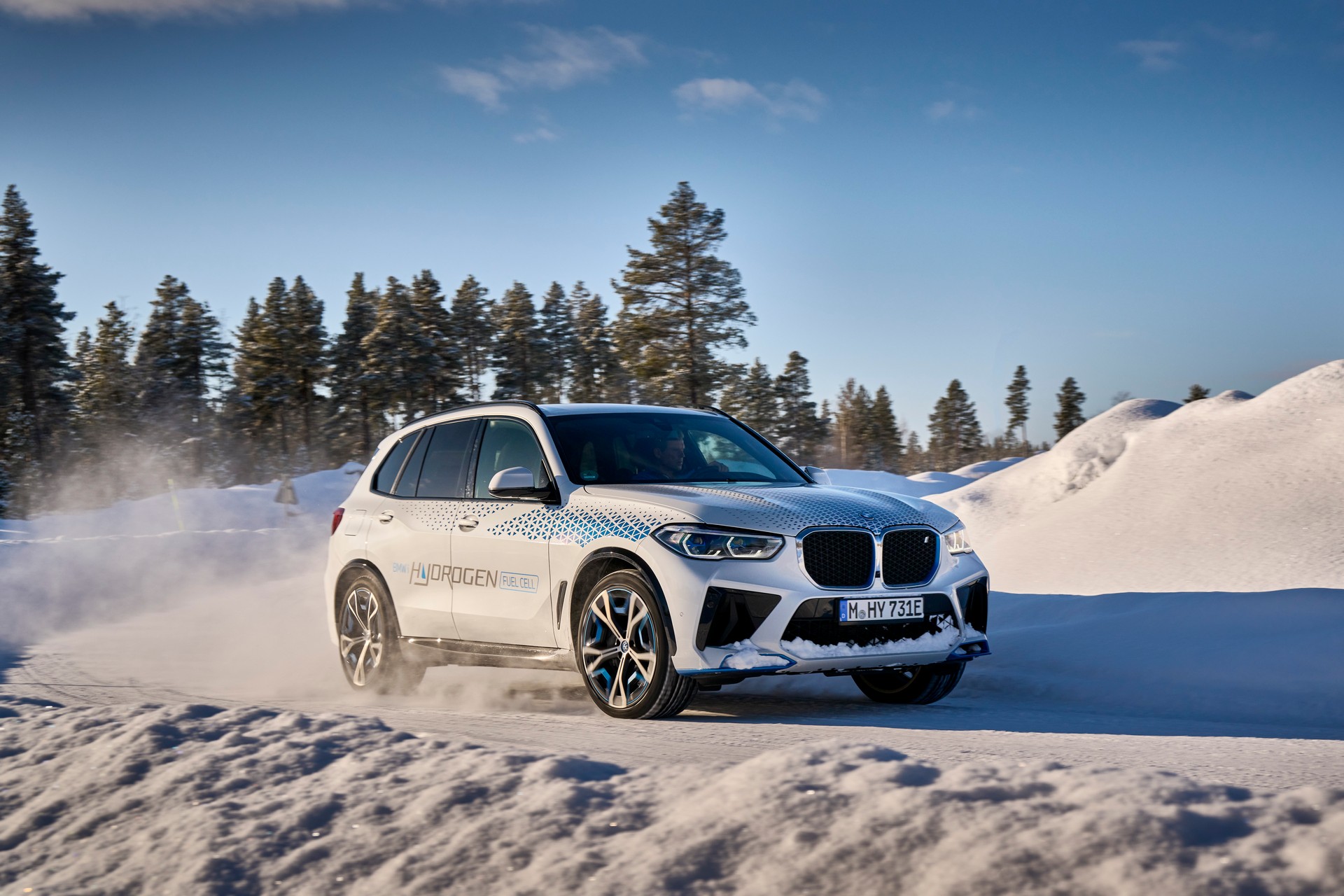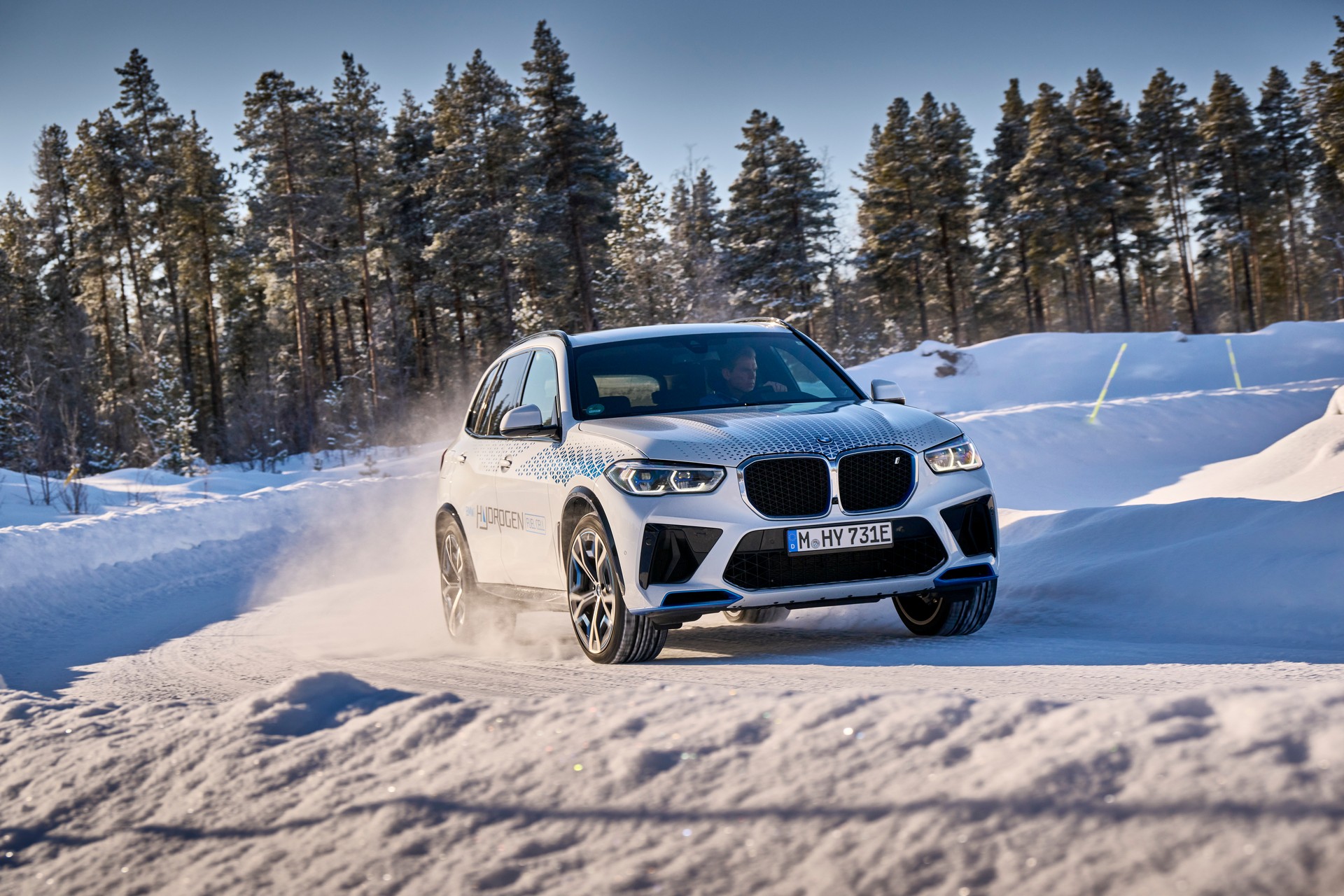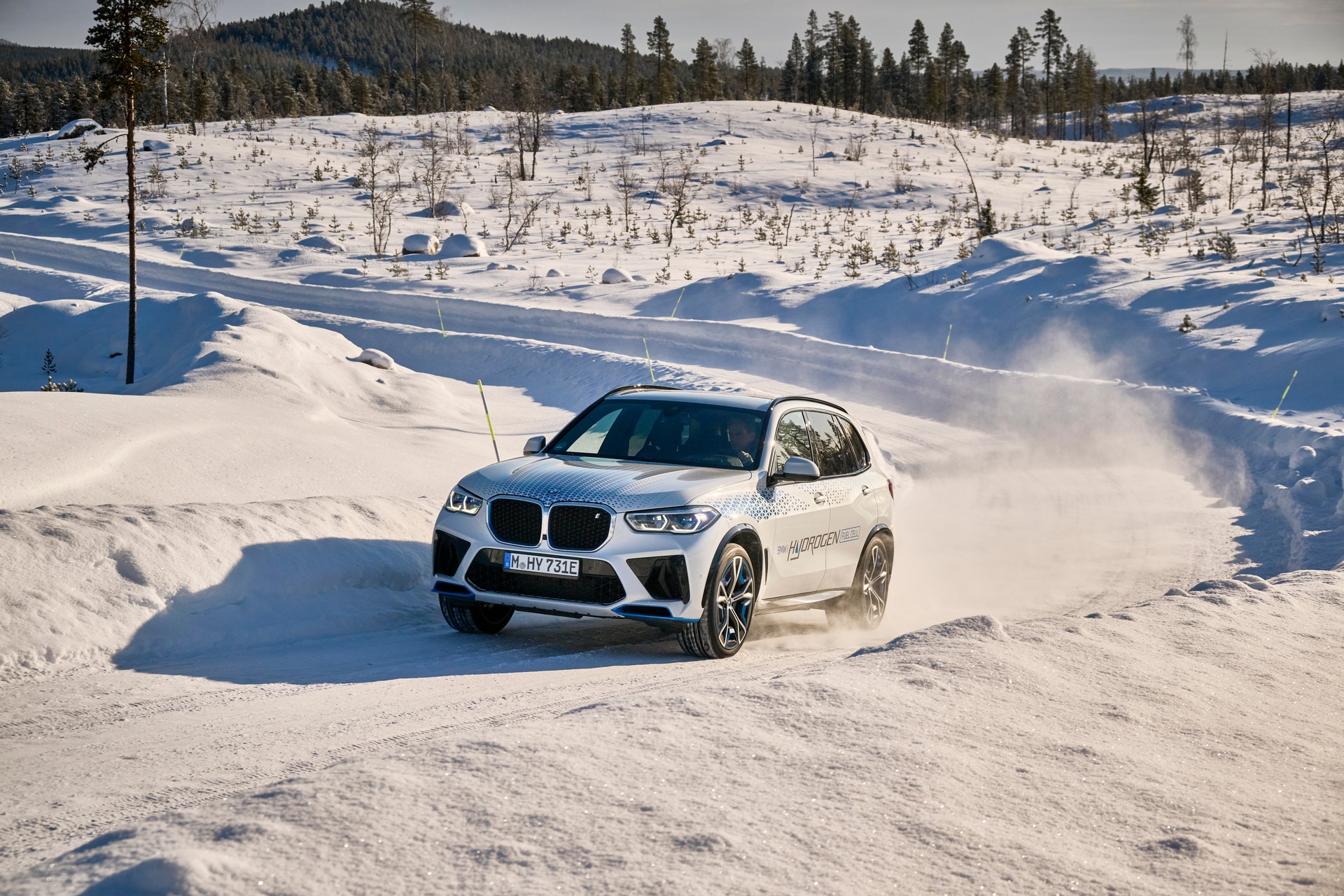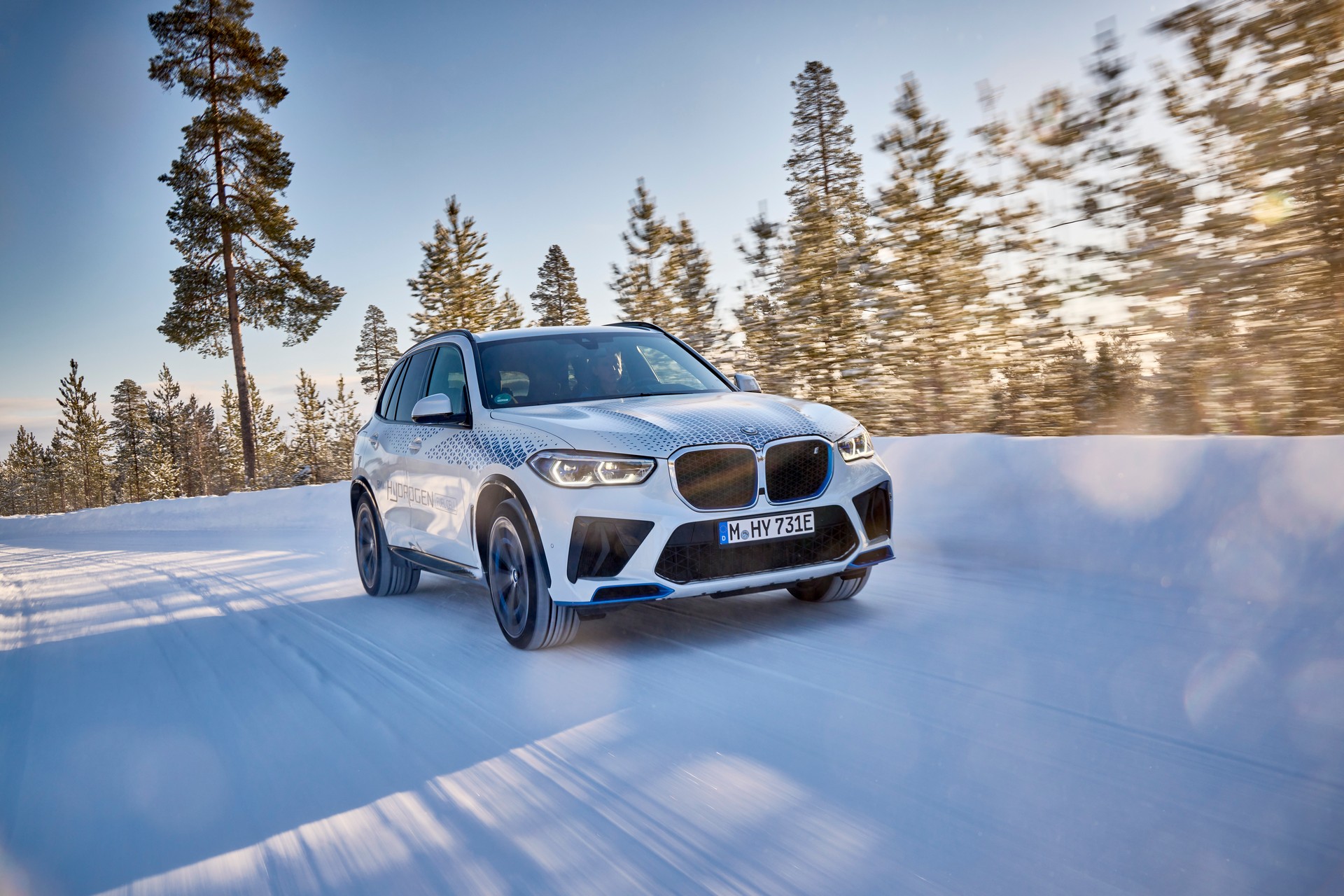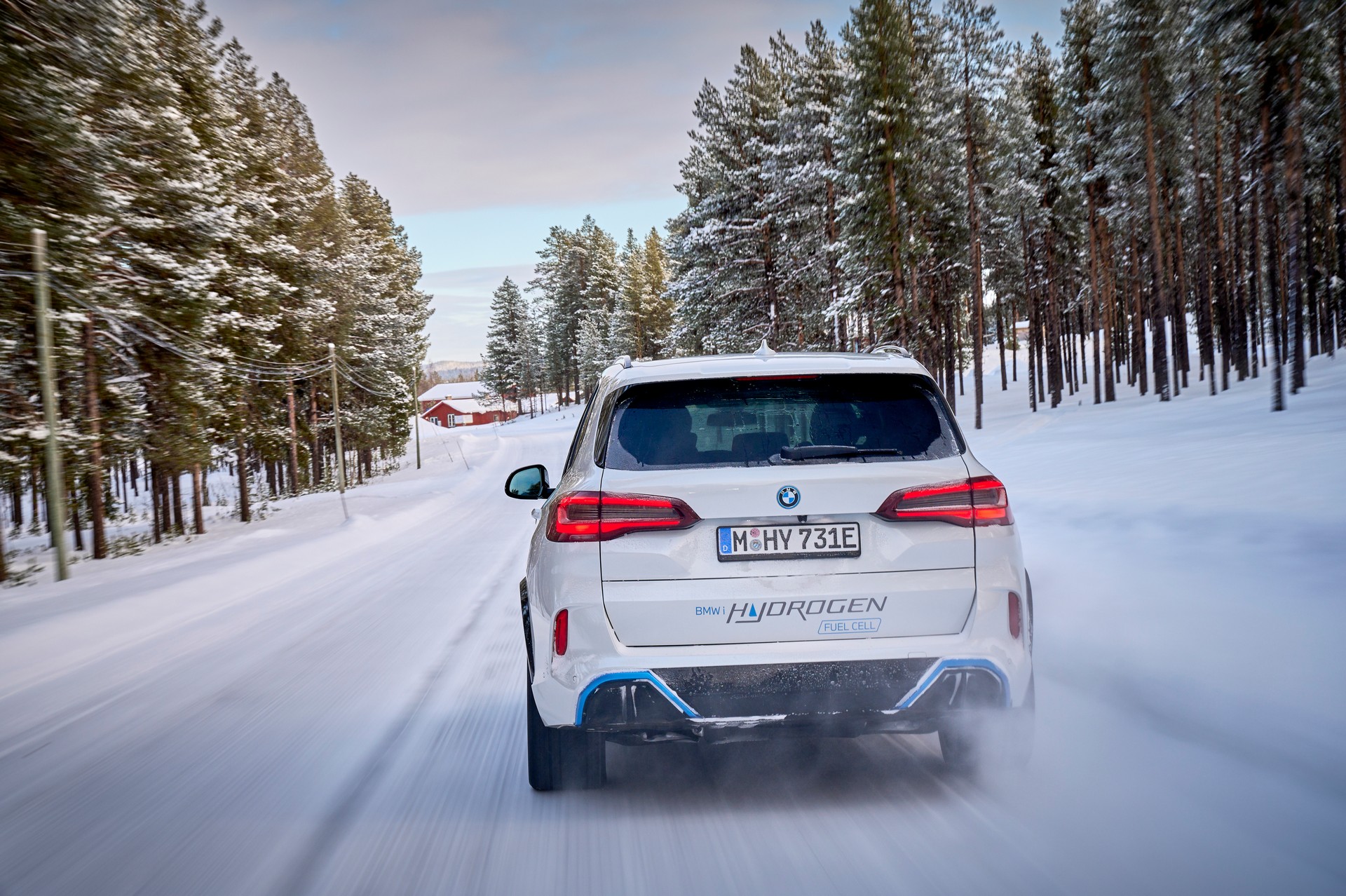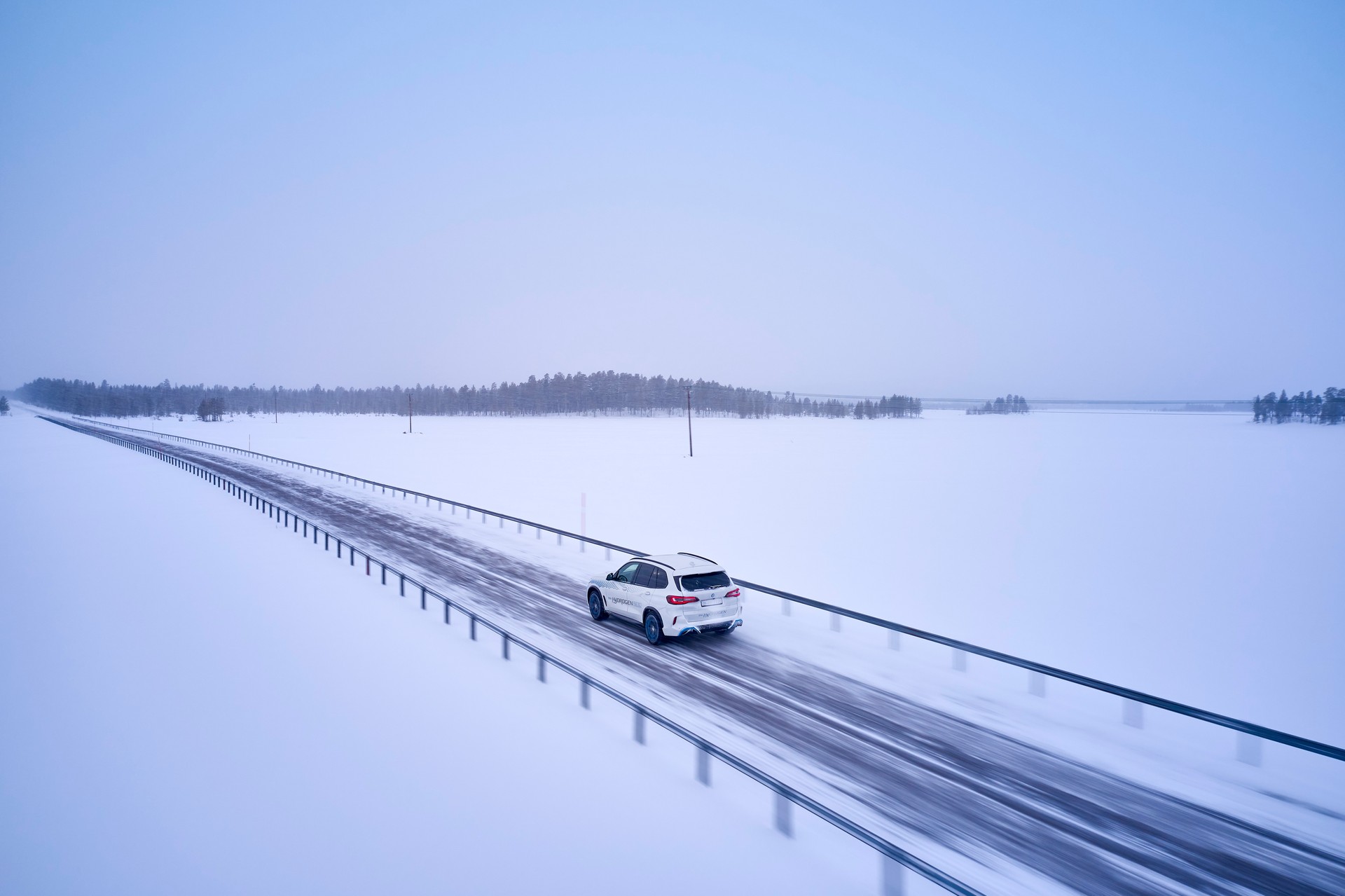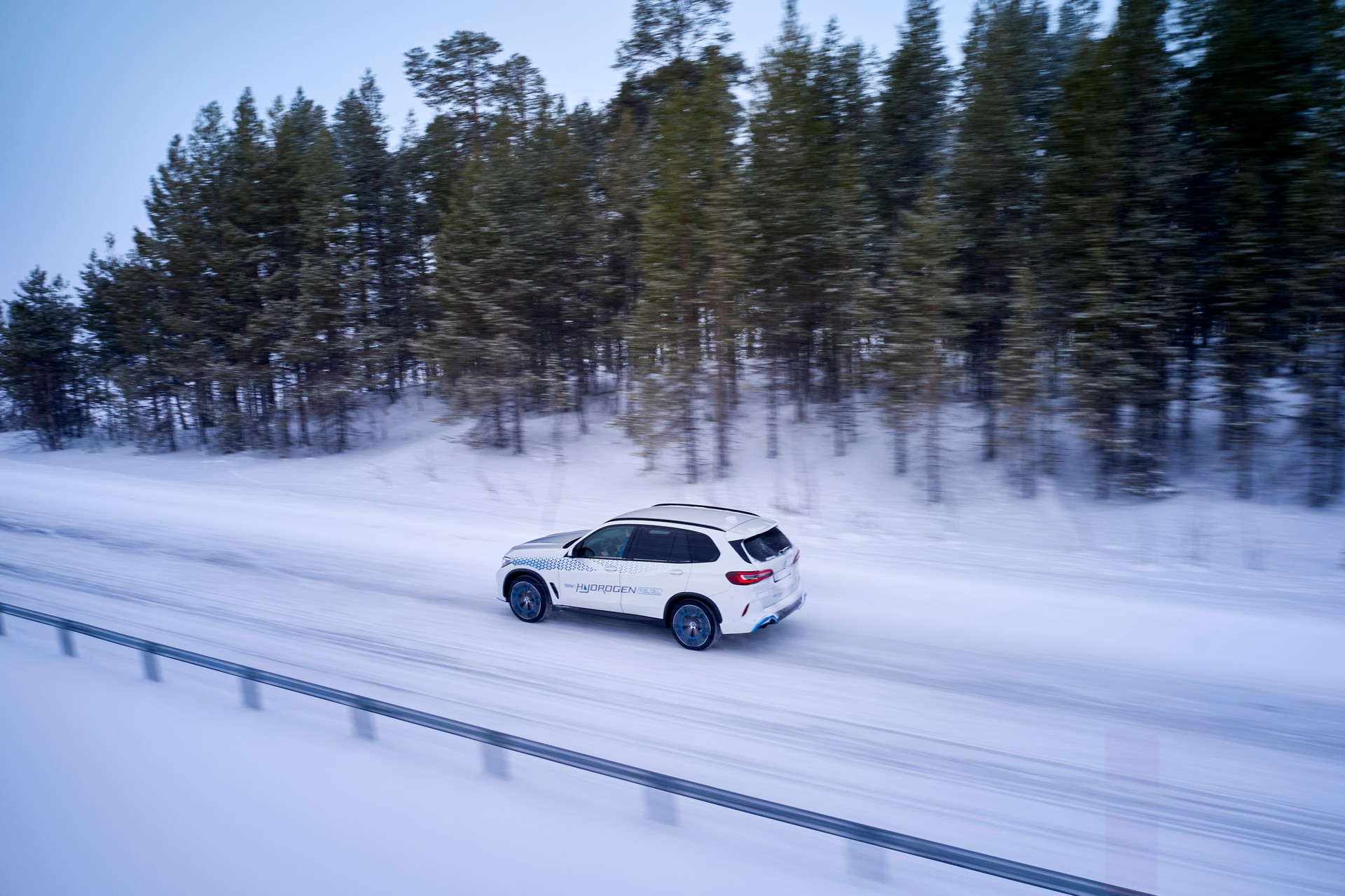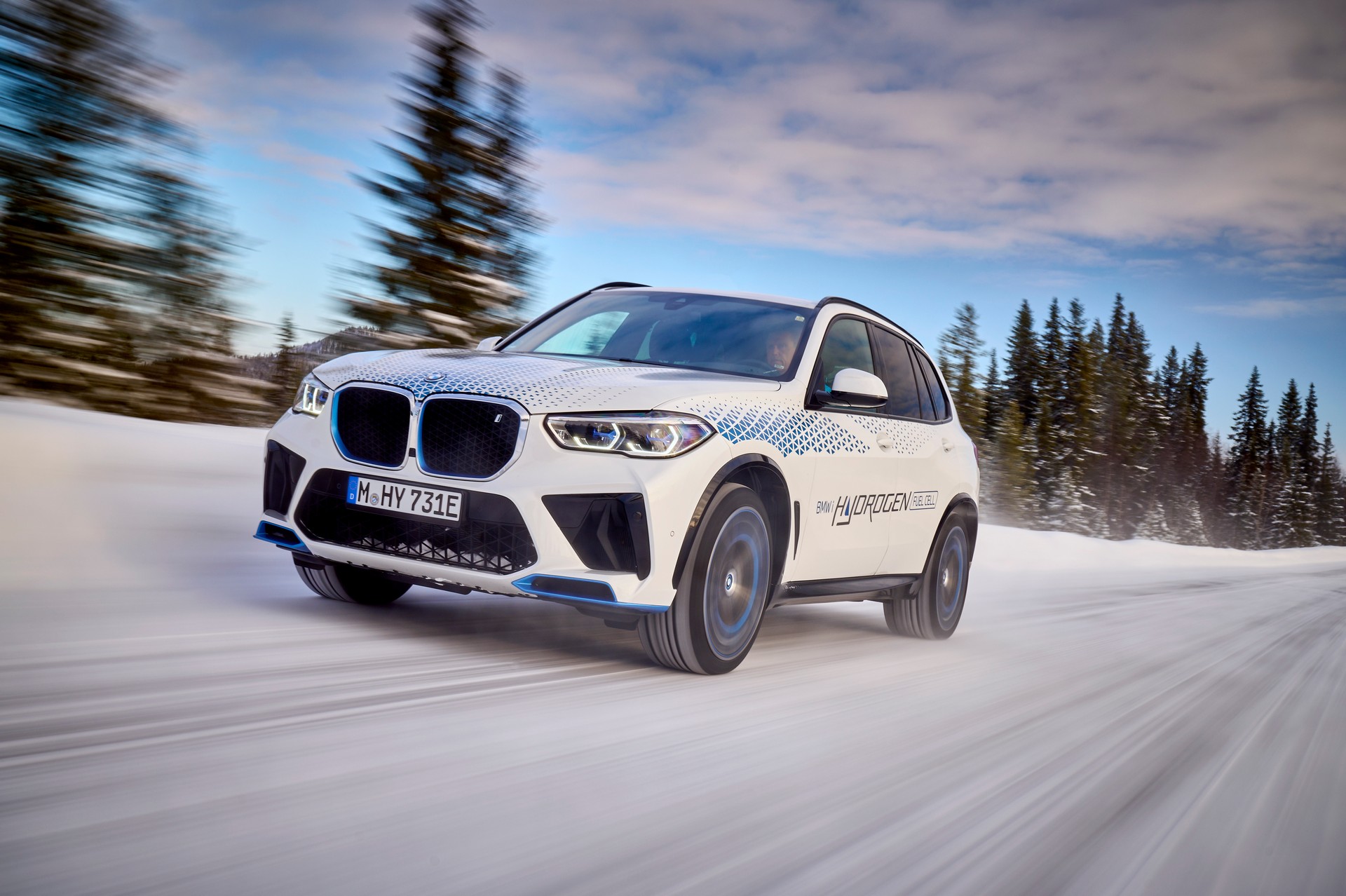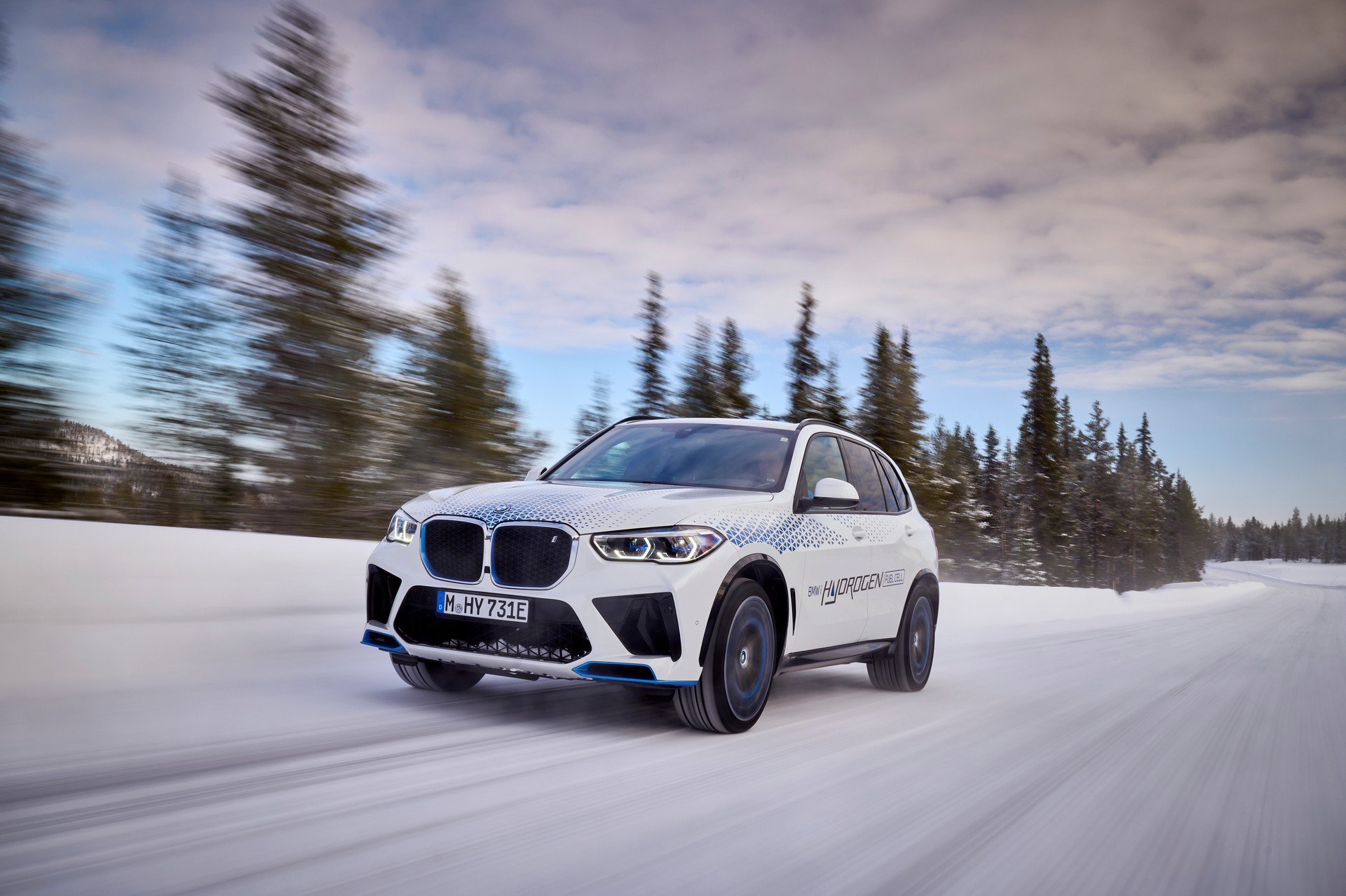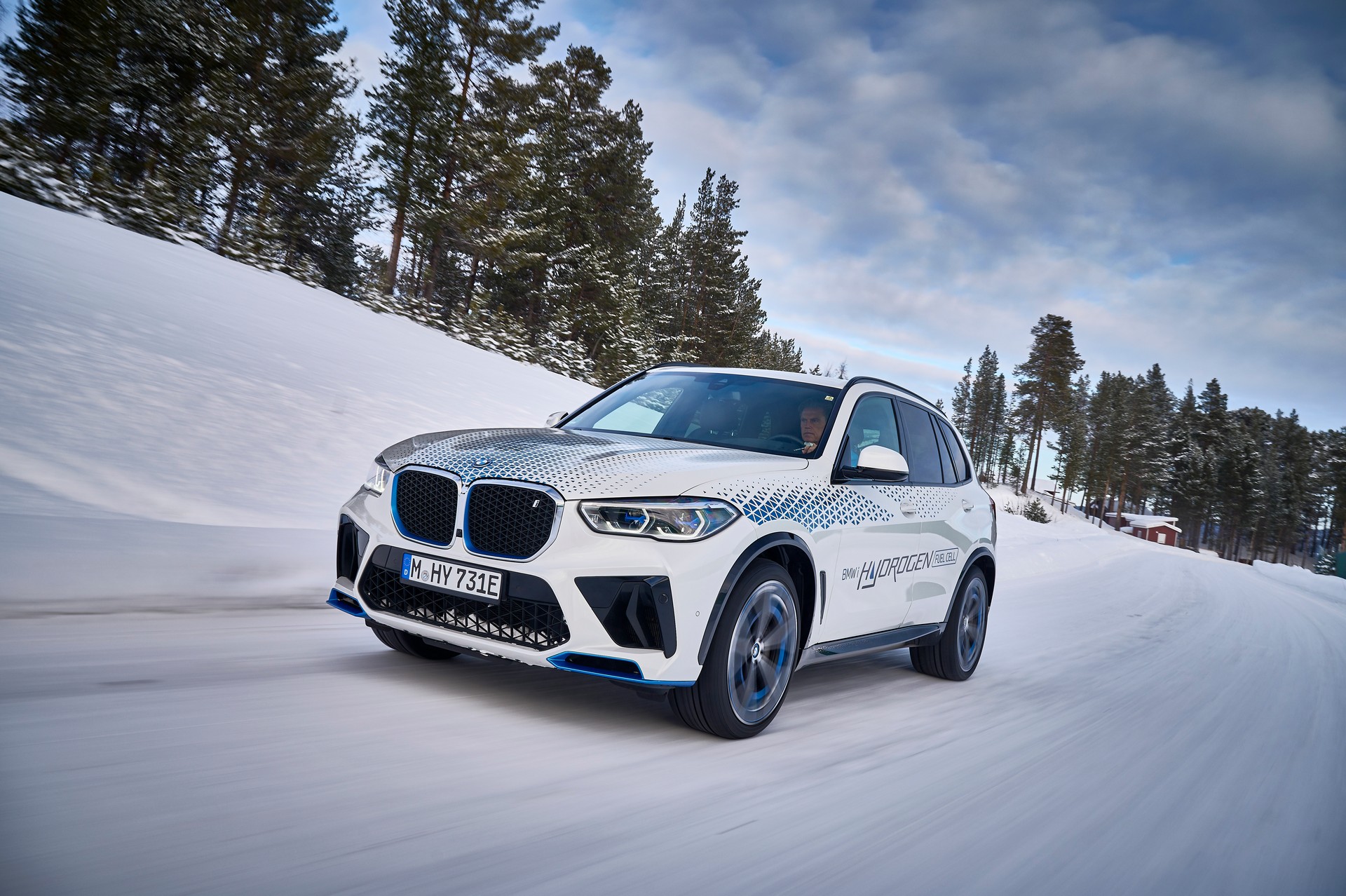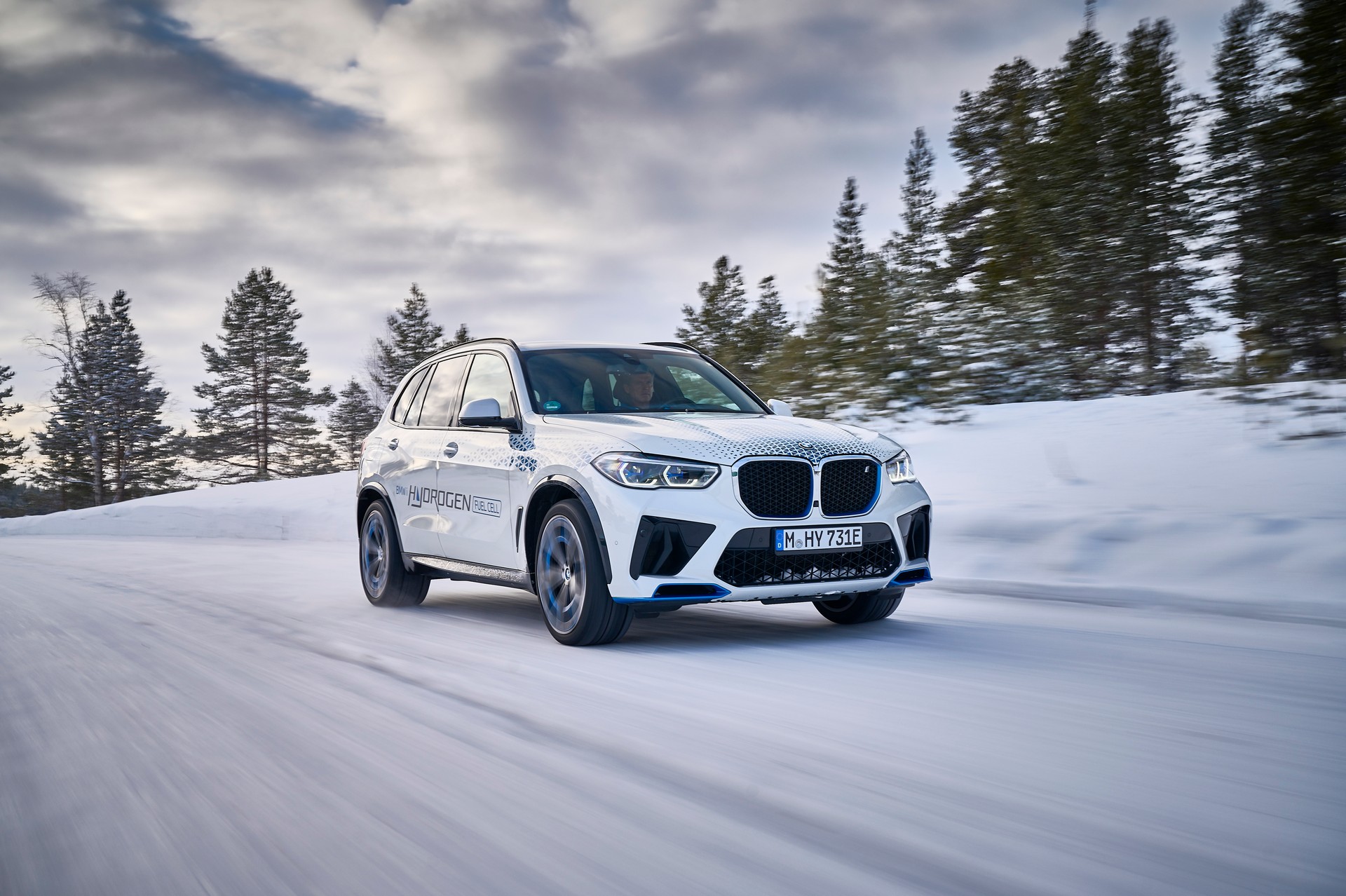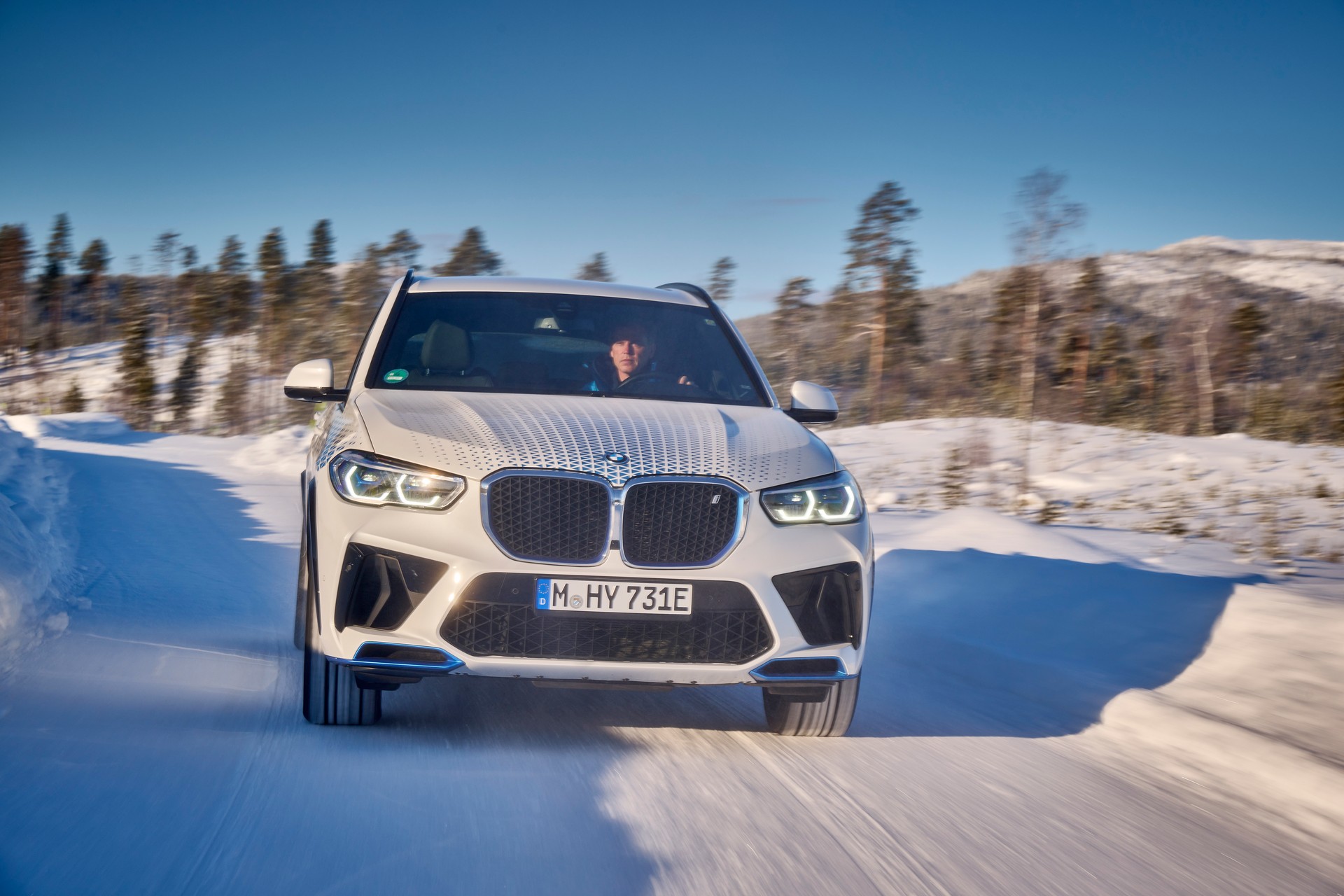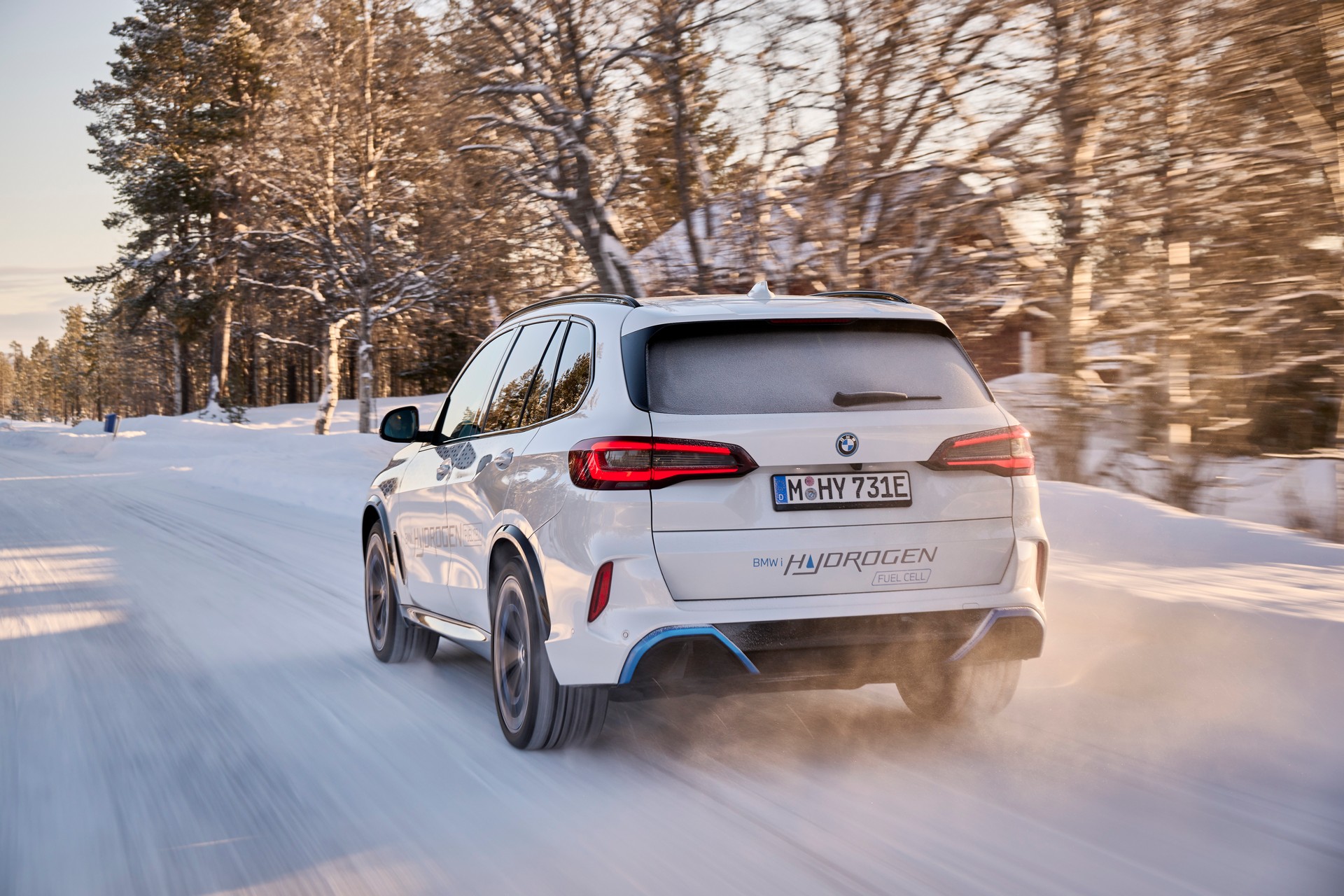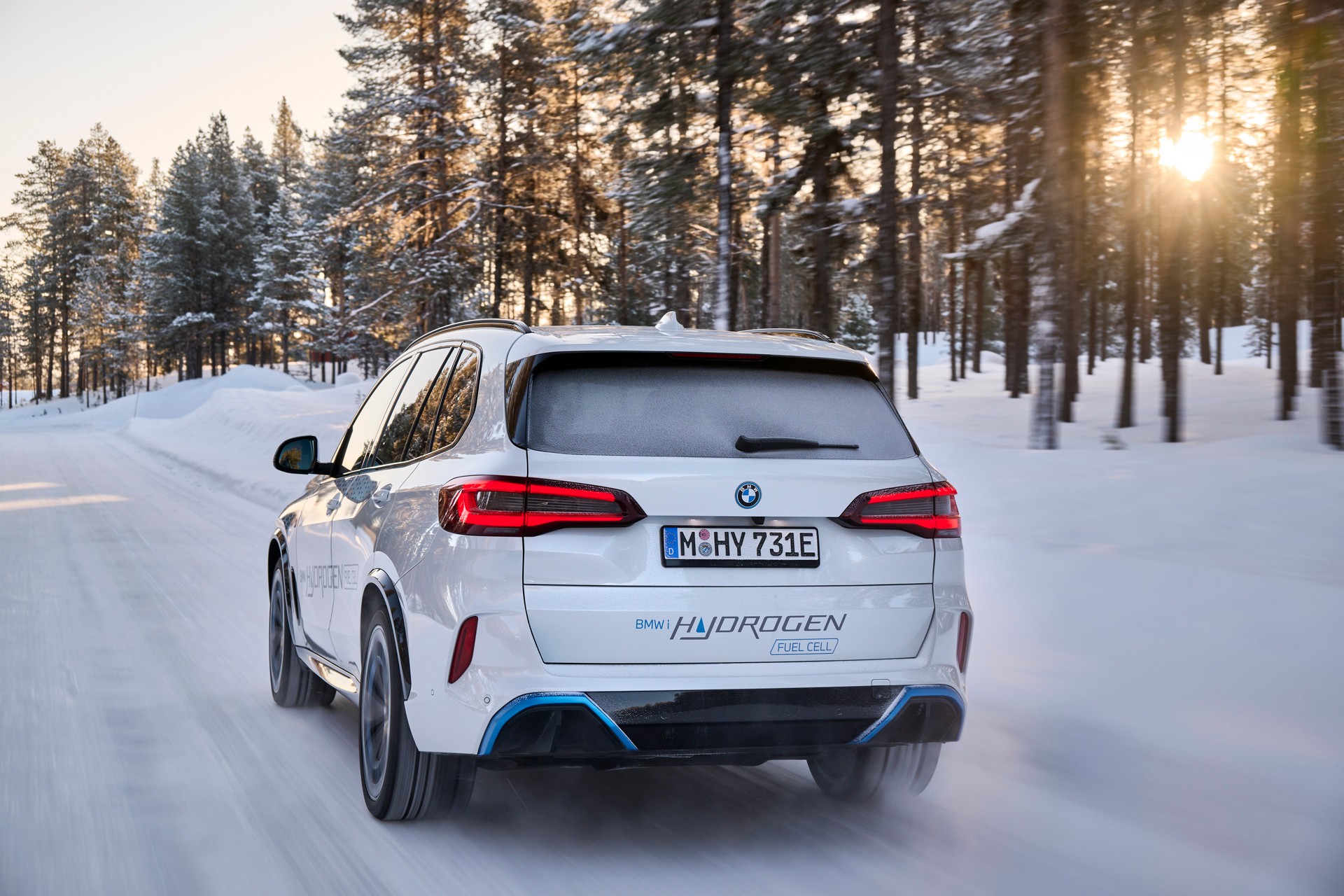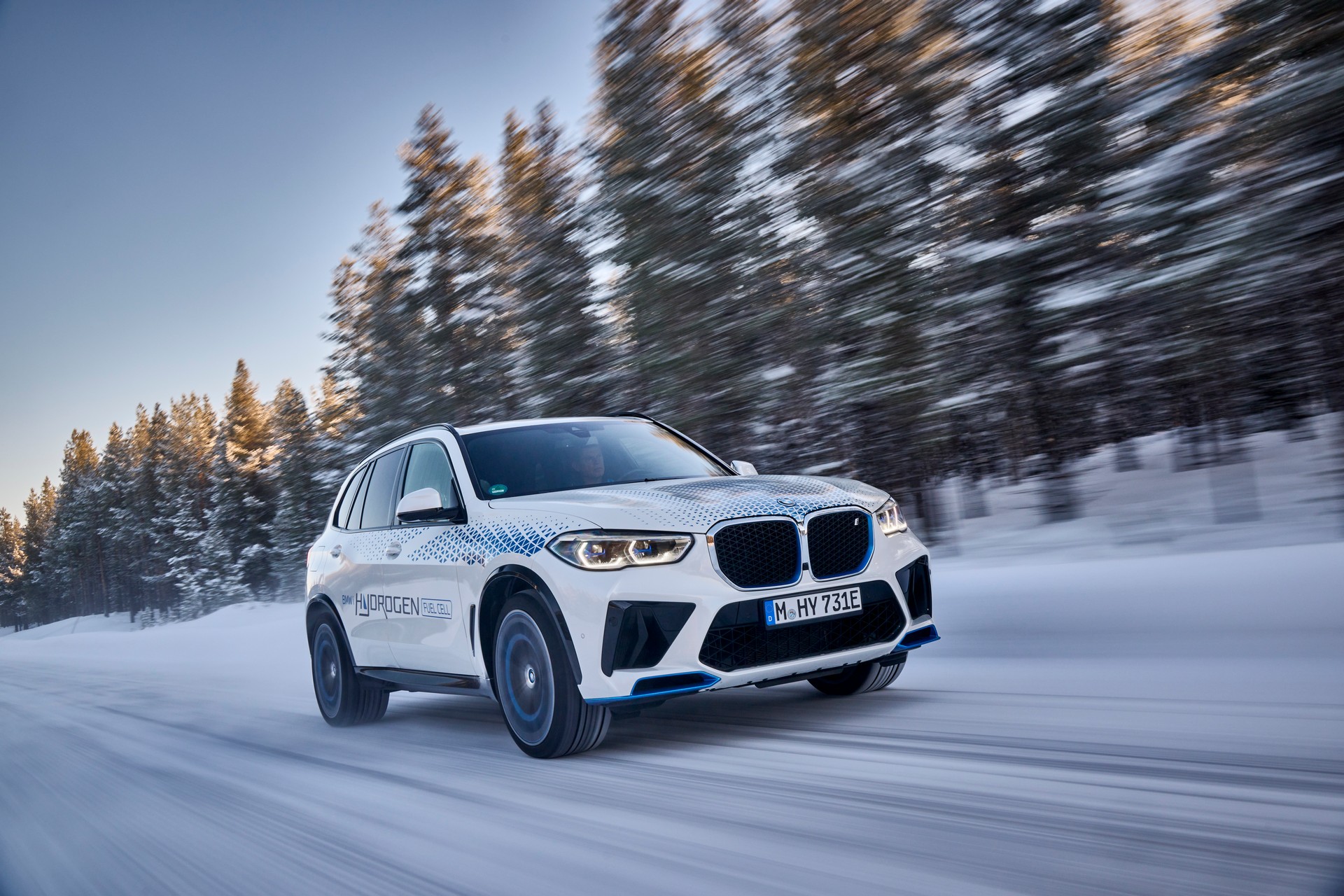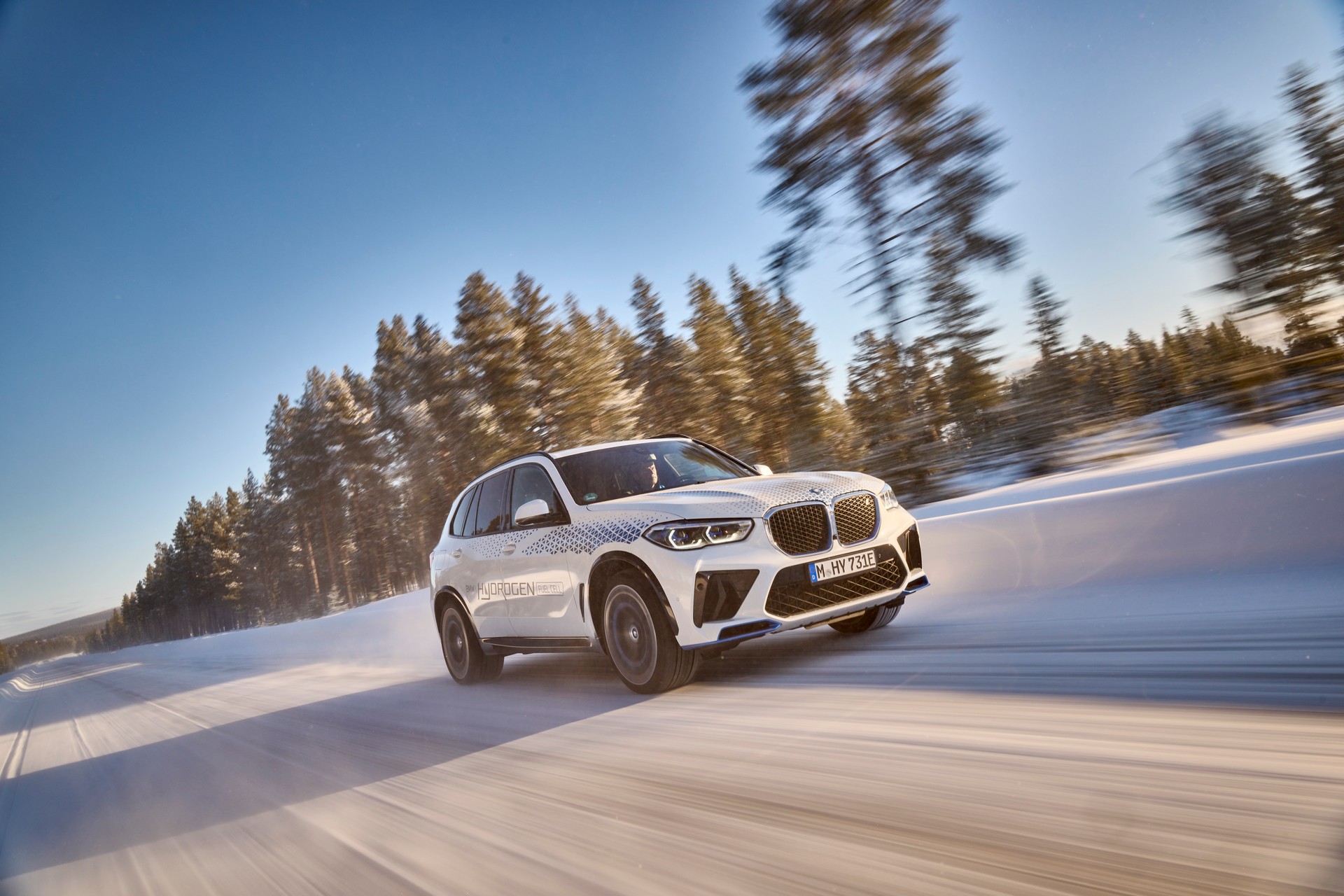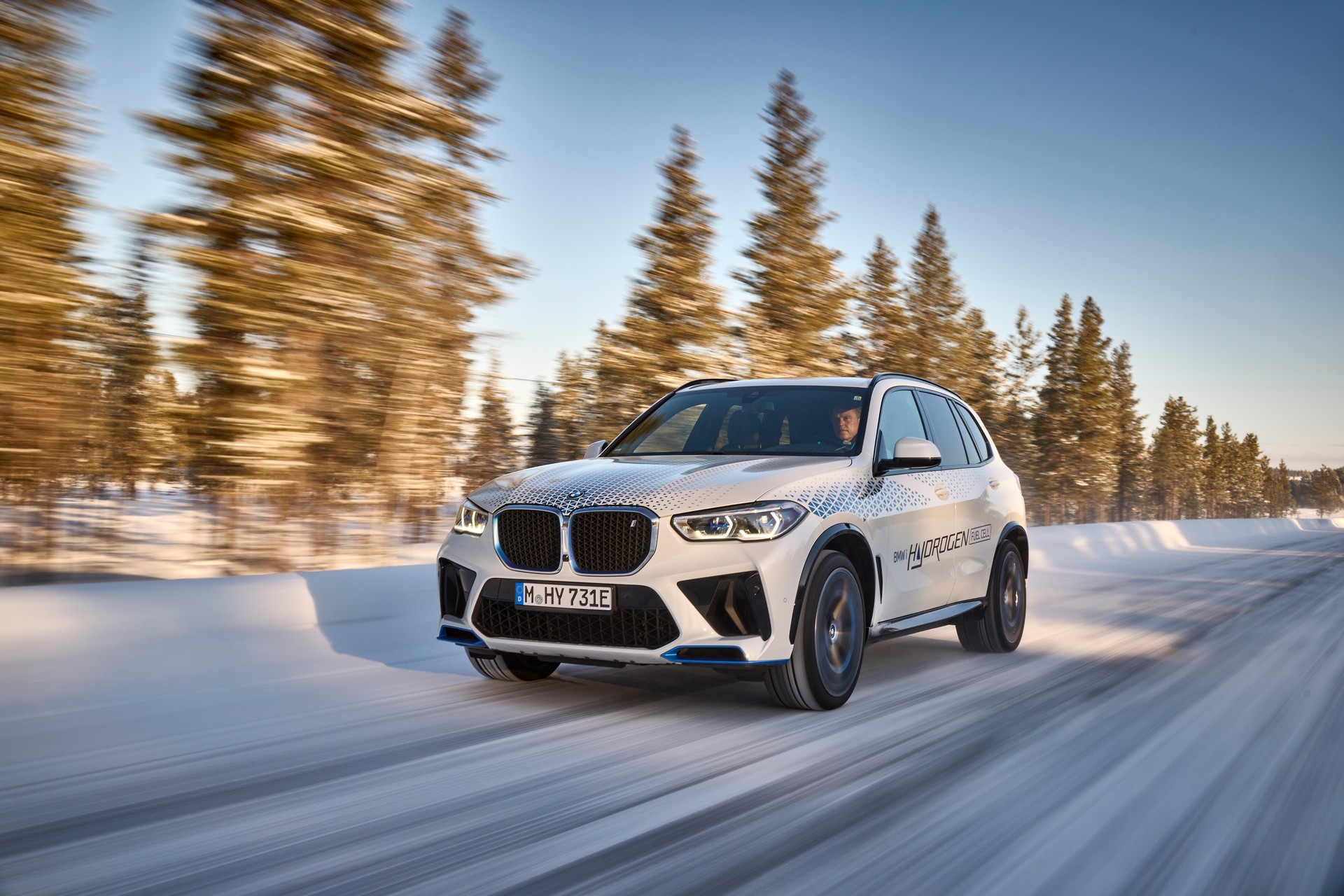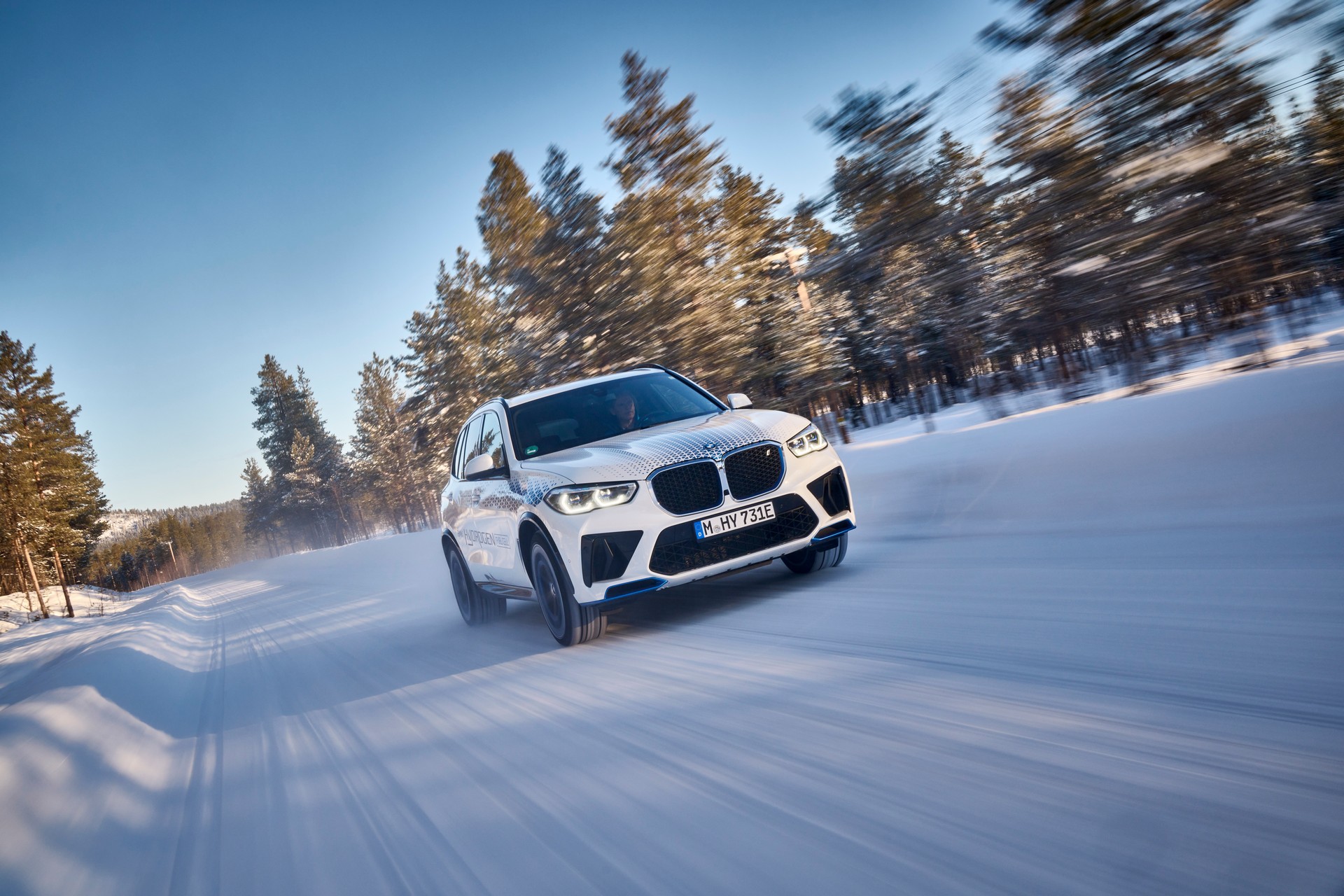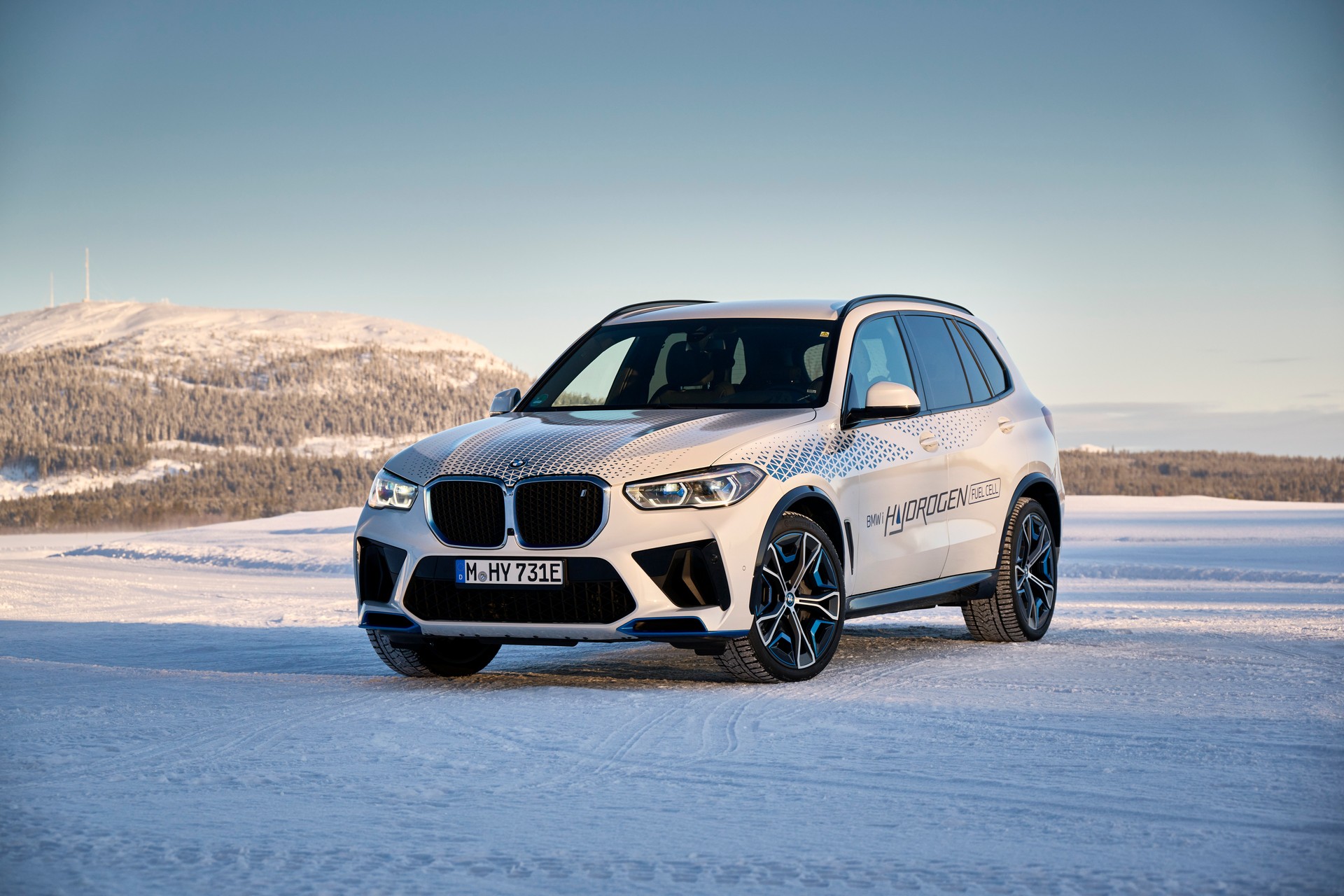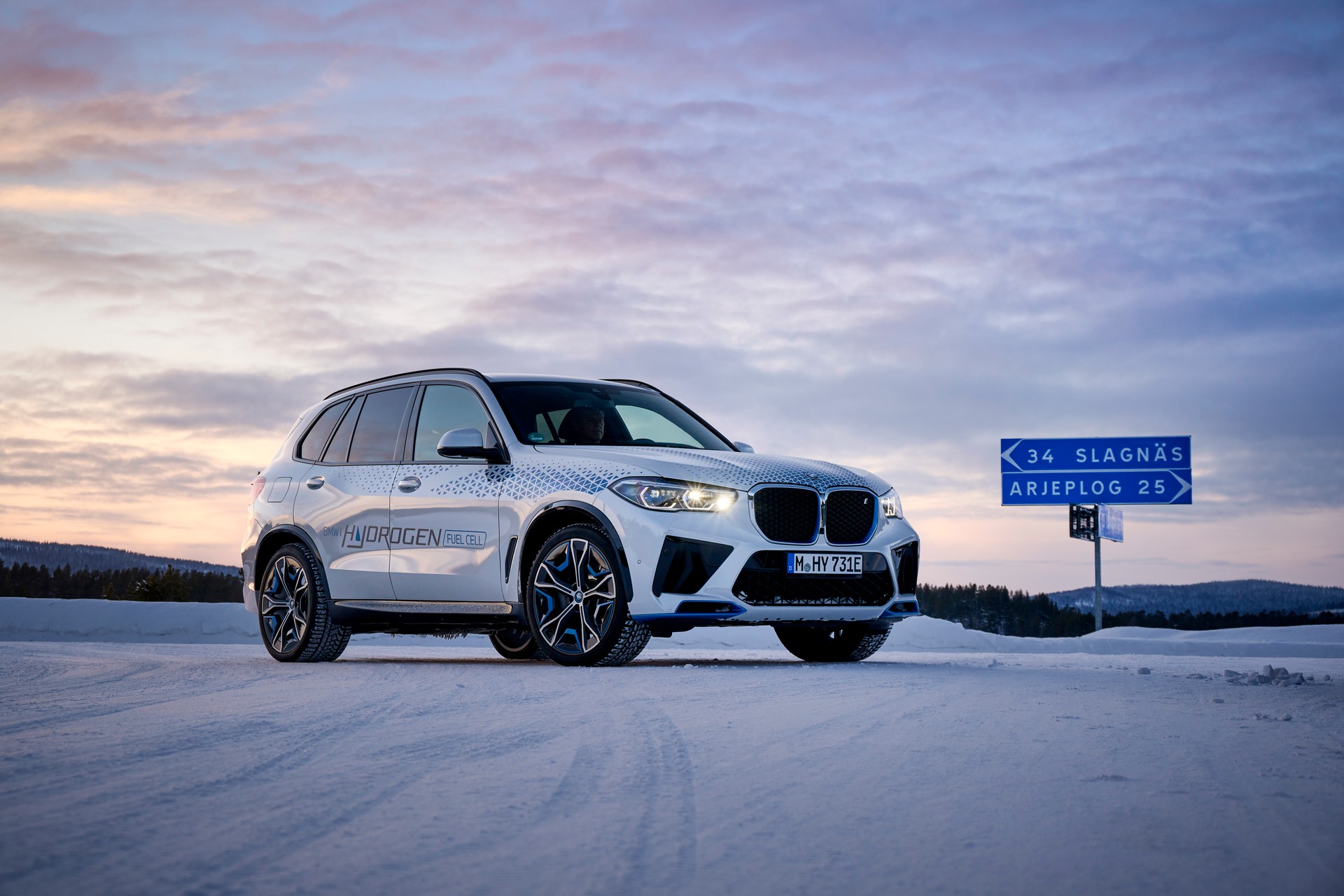BMW is pressing ahead with development of the iX5 Hydrogen as the model is currently undergoing cold weather testing in northern Sweden.
The testing and validation process is designed to ensure the crossover’s fuel cell system, hydrogen tanks, battery pack, and vehicle control unit can deliver “unrestricted performance” even in extreme cold.
Despite temperatures as low as -4° F (-20° C), BMW said the “hydrogen fuel cell drive system displays the same everyday usability as a conventional internal combustion engine.” Furthermore, unlike electric vehicles, the crossover’s range isn’t affected by cold weather and replenishing the hydrogen fuel tanks only takes three to four minutes.
Also Read: BMW iX5 Hydrogen Brings Its Fuel Cells To The Munich Motor Show
These are key advantages and BMW’s Vice President of Hydrogen Fuel Cell Technology and Vehicle Projects, Jürgen Guldner, said “The hydrogen fuel cell drive system combines the best of both drive worlds, regardless of the time of year and outside temperatures: it offers the locally emission-free mobility of an electric vehicle and the unrestricted everyday usability – including short refuelling stops – familiar from models with an internal combustion engine.”
Speaking of the powertrain, it features two carbon fiber reinforced hydrogen storage tanks that feed a fuel cell which converts hydrogen into electricity. This is used to power a rear-mounted electric motor that develops 369 hp (275 kW / 374 PS). The only emission created by the vehicle is water vapor and waste heat is harnessed to warm the cabin.
The iX5 Hydrogen will go into small series production later this year, but BMW knows its biggest limitation is lackluster hydrogen refueling infrastructure. As BMW’s Frank Weber explained, “For us to be able to offer our customers a fuel cell drive system as an attractive sustainable mobility solution, a sufficiently extensive hydrogen infrastructure also needs to be in place.”




